AC Milan sank to a new low for the season as they lost 1-0 to Udinese at San Siro on Saturday, a side that had previously failed to win a league game in 2023-24.
A second half Roberto Pereyra penalty was enough to secure victory against a lacklustre Milan. The home team were afforded the majority of the ball by the visitors but despite their superior possession, it was Udinese who looked most likely to score in the opening period.
The away side regularly looked to threaten in transitional moments, particularly through the use of their energetic wing-backs, but spurned chances to score in both the 9th and 23rd minutes from counterattacking situations.
Milan’s first shot from open play came in the 25th minute, courtesy of a long range effort. Davide Calabria’s late central run from deep caught the Udinese mid-block off-guard and the right-back found space to receive and shoot, forcing a save from Marco Silvestri.
Ten minutes later, Milan had another shot from distance when Yunus Musah turned down the opportunity to cross into an occupied box, instead cutting inside and shooting with his left-foot which Silvestri palmed away.
In the 38th minute, Milan had their most dangerous moment of the half when an unmarked Alessandro Florenzi was found inside the box but he failed to connect with the ball from 12 yards out when he only had the opposition goalkeeper to beat.
With Milan’s play lacking inspiration, Stefano Pioli tried to initiate some with a double half-time substitution. And, two minutes after the restart, it nearly paid off. A long ball from the deep was directed into the now central Oliver Giroud who controlled and cushioned into substitute Noah Okafor’s path. The Swiss forward then put Tijjani Reijnders through on goal but under pressure the Dutch midfielder failed to hit the target
On the hour-mark, following an all too familiar ball loss from Milan, Udinese worked the ball out to their tireless right wing-back, Festy Ebosele, whose carry into the box won his side a penalty. After a VAR deliberation, the award was ratified and Udinese converted to take the lead their spirited display warranted.
The remaining thirty-minutes of play passed without much further Milan threat. The closest the home side came to equalising was in the 90th minute when an inswinging Rafael Leão cross was met by Giroud’s shoulder inside the six-yard box but Silvestri acrobatically saved.
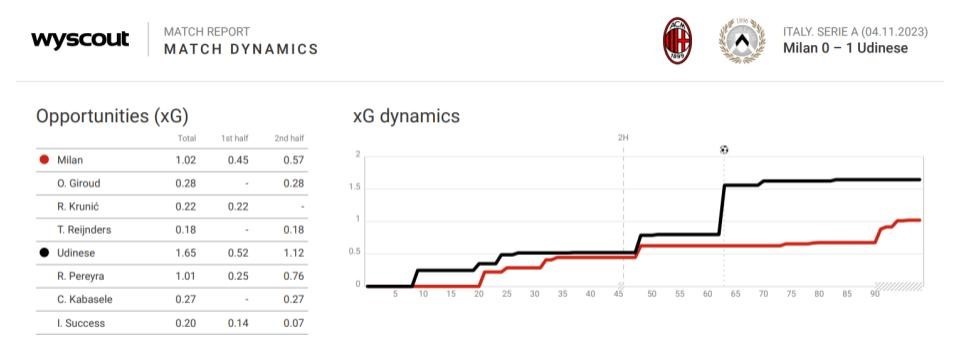
This defeat made it four games without a win for Milan. Here to share his thoughts on this disappointing loss, and performance, is @Tactics_Tweets.
Set-ups
Pioli was forced to contend with further injuries when selecting his starting eleven. In defence, Malick Thiaw returned following suspension and Alessandro Florenzi replaced an injured Theo Hernández. in the forward line, Luka Jović was chosen to replace Christian Pulisic.
These changes in personnel, and therefore different player profiles on the pitch, meant that Milan adapted their shape in different phases of play. In defensive phases, Milan operated in a 5-2-3 system with Musah dropping on the outside of Calabria to help deal with the threat of Udinese left wing-back Jordan Zemura.
This backline of five was Pioli’s solution to dealing with the visitors’ advanced wing-backs, and enabled Thiaw and Tomori to prioritise their attentions on Isaac Success and Roberto Pereyra, with Calabria as additional coverage and able to jump out to advanced midfielders, such as Martín Payero, if needed.
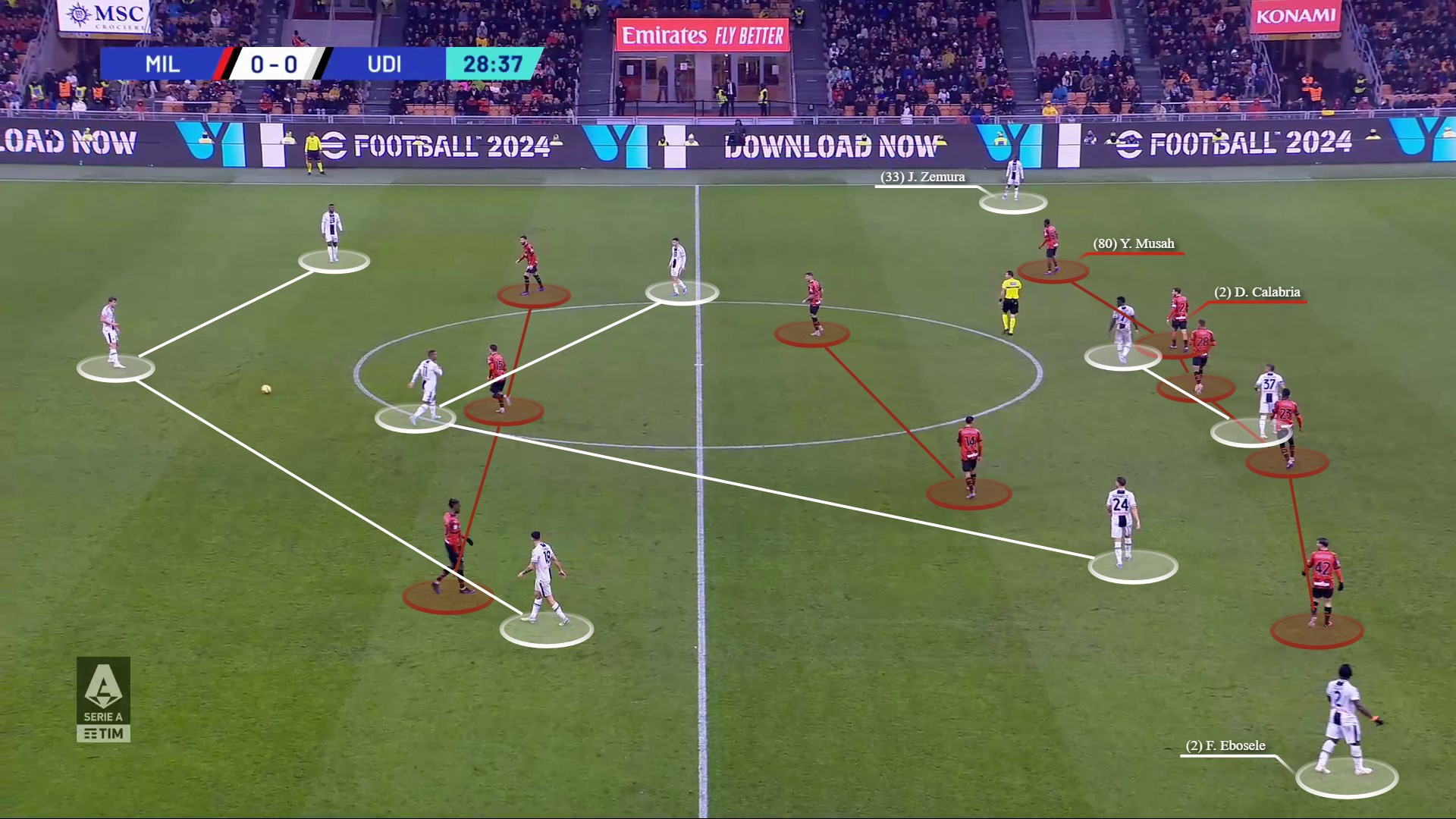
But Milan rarely had to defend against prolonged spells of settled Udinese possession so mainly switched into this defensive shape in transitional moments. With 68% possession over the course of the ninety-minutes, Milan spent the majority of the game in their attacking shape.
In this phase of play, Milan pushed Musah high and wide on the right wing leaving a back four, giving the team what can be best described as a 4-2-4 structure. But Milan were rarely in this arrangement for too long, with Reijnders often playing more advanced than Rade Krunić, trying to find spaces in between and behind the Udinese midfield line.
In build-up phases, whilst both full-backs initially tended to hold their width, when in middle third possession each could also at times ‘read the spaces’ and push infield or occupy more advanced positions in the half-spaces. Florenzi had the higher propensity to do this, attempting to disorient this side of the Udinese block to create more space for Leão on the left wing.
As Milan’s play reached the final third, both full-backs had license to join the attack with a variety of supporting, overlapping and underlapping runs attempted. With Udinese packing out central areas of the pitch, the majority of Milan’s final third entries were in wide areas – as we’ll come on to.
For Udinese, new manager Gabriele Cioffi was content for his team to be without the ball. His side tended to allow Milan easy progression into the middle third of the pitch where they would be met with a compact defensive block.
The formation of this block varied between a 4-4-2 and 5-3-2, with the main difference being the height at which Ebosele defended – with his reference points being where the ball was located on the pitch (e.g. as the ball progressed, he would drop lower) and where opponents on his flank were positioned.
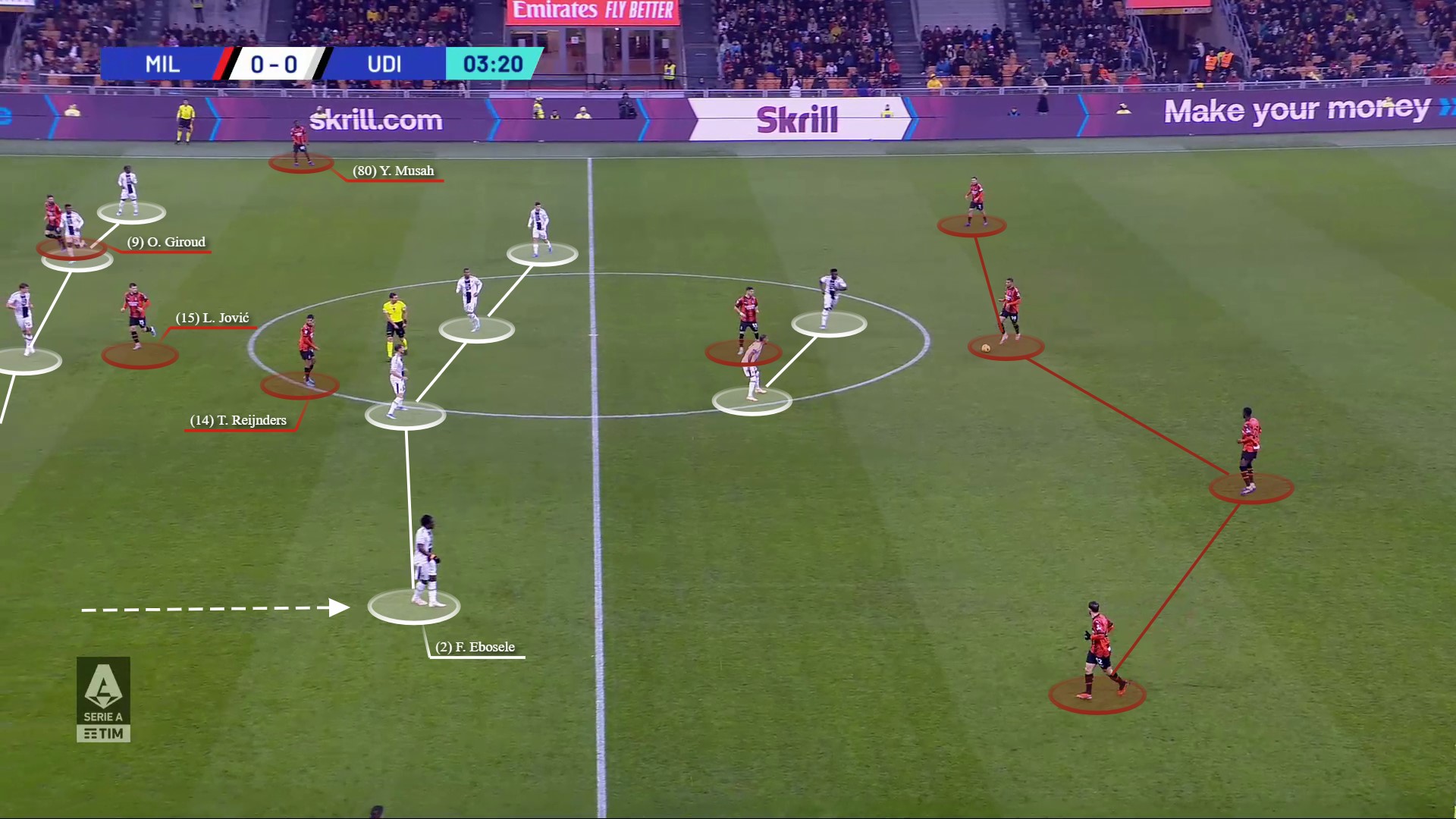

In spells of possession, and in moments of transition, Udinese’s wing-backs both sprung forward to provide width in attack. In central areas, forwards Success and Pereyra were supported by midfielders Lazar Samardzic and Payero, leaving Walace and the three central defenders at the base of their attacking system.
Lacking quality and ideas
By starting both Jović and Giroud, Milan’s plan of attack unsurprisingly intended to use crossing as a means of chance creation. With Udinese’s defensive organisation limiting spaces in central areas, Milan’s entry into the final third was also more conducive to ball progression in wider areas.
The @markrstats pass clutter map below shows the volume of Milan passes that were directed around the Udinese block.
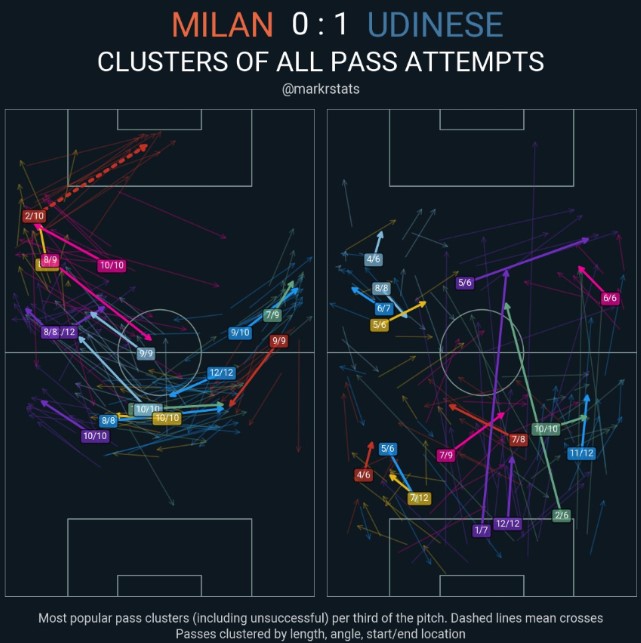
So Milan had two centre forwards on the pitch and were afforded lots of opportunities to progress the ball into advanced wider areas. Plus, the opposition were prepared to allow them lots of possession and territory.
A match made in heaven you therefore may presume. Well, in fact, this match soon descended into hell for the Rosseneri with a distinct lack of quality and variety to their play being the biggest culprits of their downfall.
In terms of crossing, Milan attempted 29 against Udinese – their highest total in any game this season. And whilst the accuracy was nowhere as bad as against Juventus (only 19.23% successful), as this was Milan’s main – and as would become evident, their only – attacking tactic, their wastefulness in these moments proved a major hindrance in the quality of their chance creation.
The omen was set for Milan from the 4th minute when a long diagonal pass from Calabria found Leão in behind the Udinese defence.
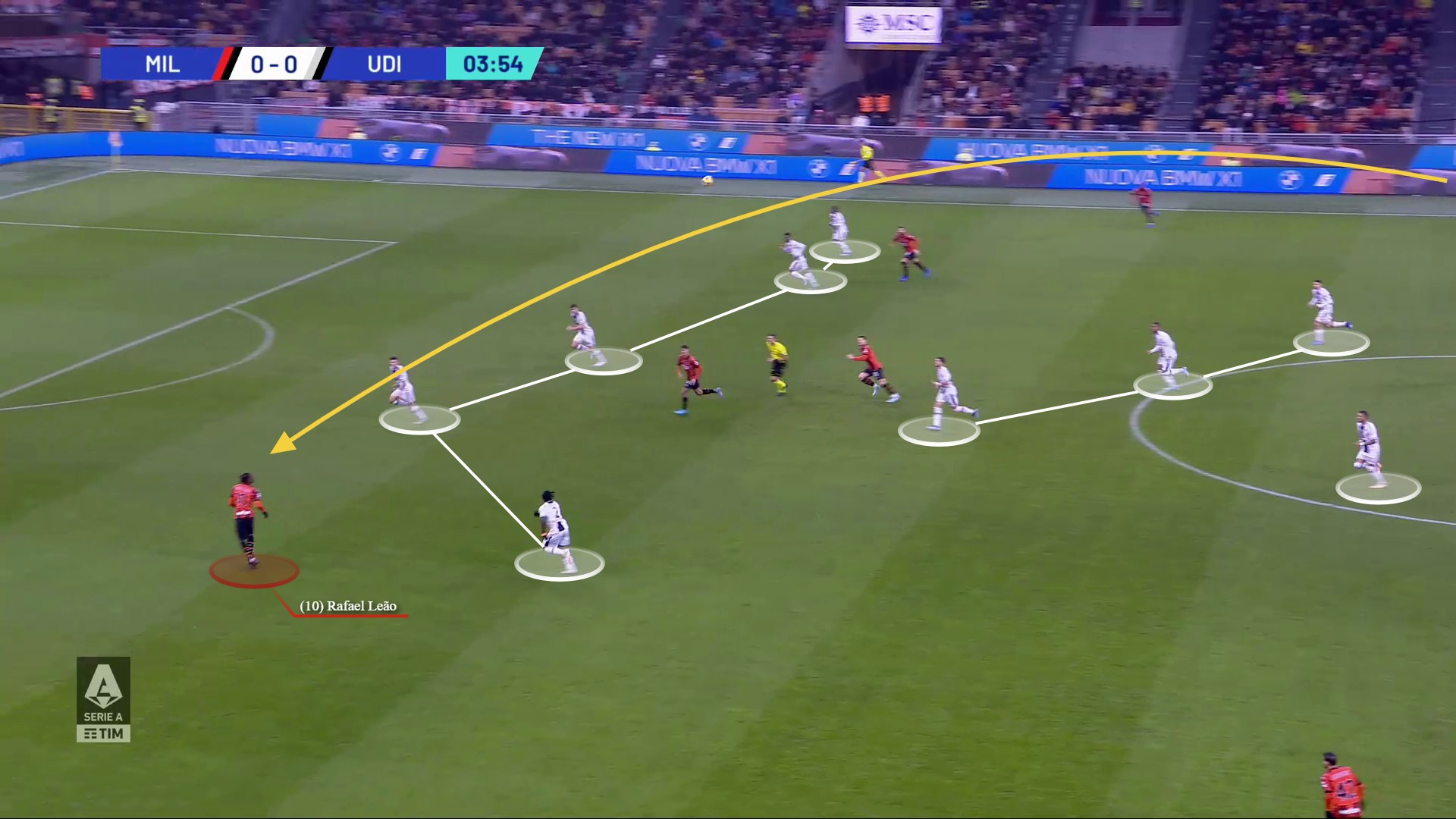
After controlling the ball, Leão found himself 1v1 against an opponent with four teammates ahead of him.
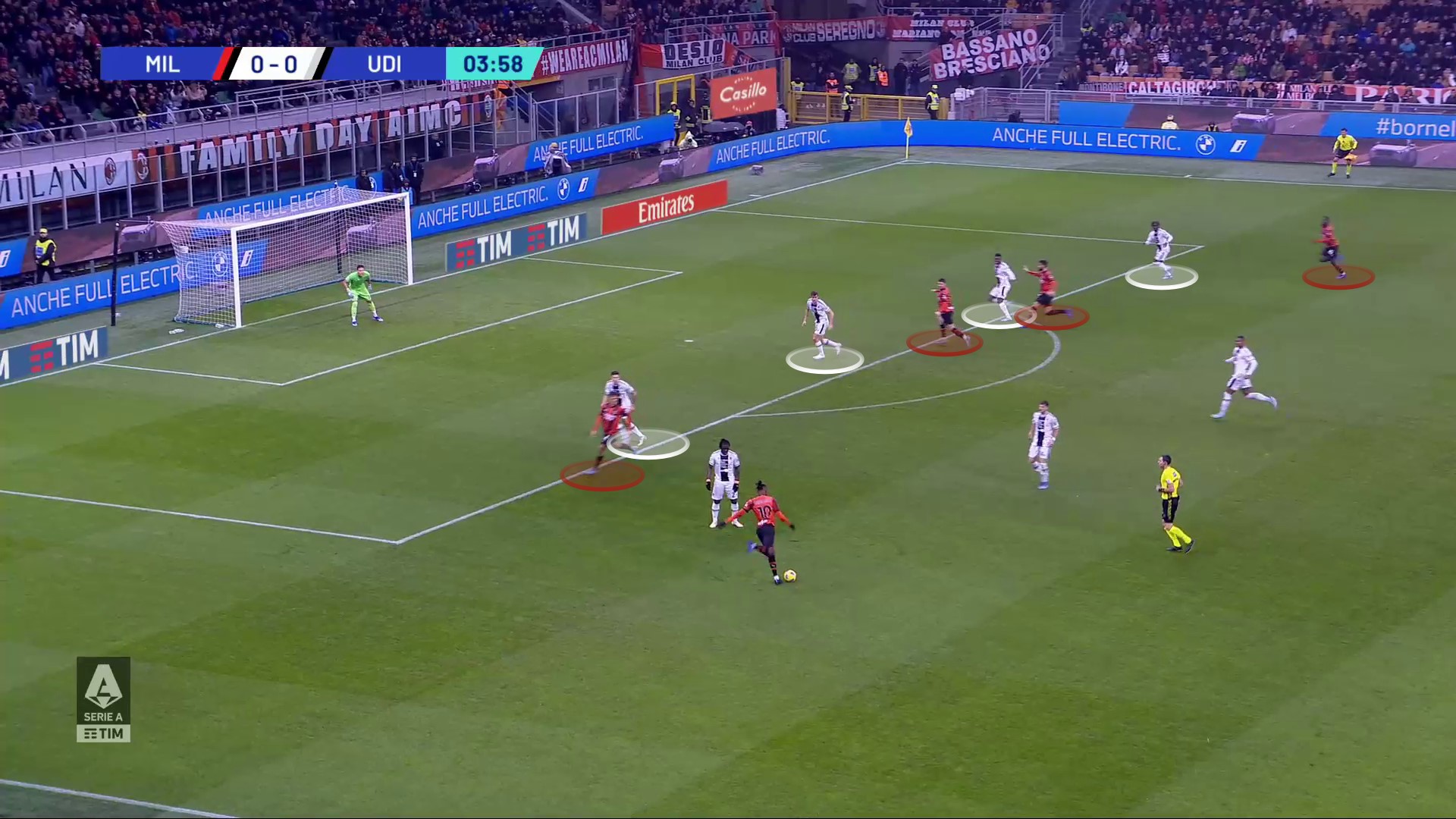
However, despite having three teammates in 1v1 match-ups inside the box, Leão’s inswinging cross barely left the ground and was easily intercepted by the first defender.
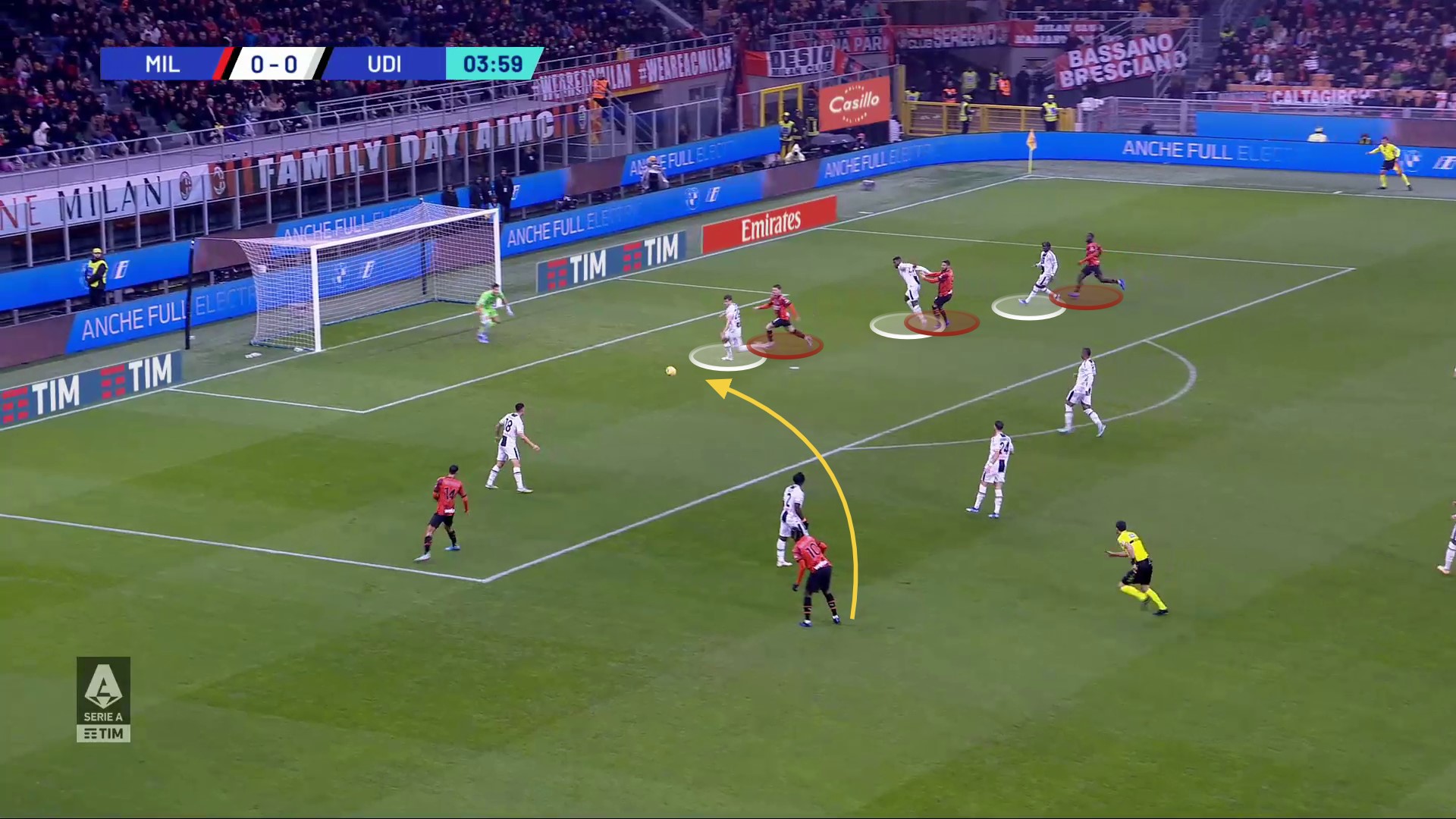
In the 12th minute, following multiple turnovers in possession from either side, Leão was again found in behind a disjointed Udinese backline.

After entering the box and chopping back onto his right foot, Leão had two teammates outnumbering one Udinese defender between the width of the goal. But the cross ended up sailing over both players’ heads allowing Udinese players time to recover.
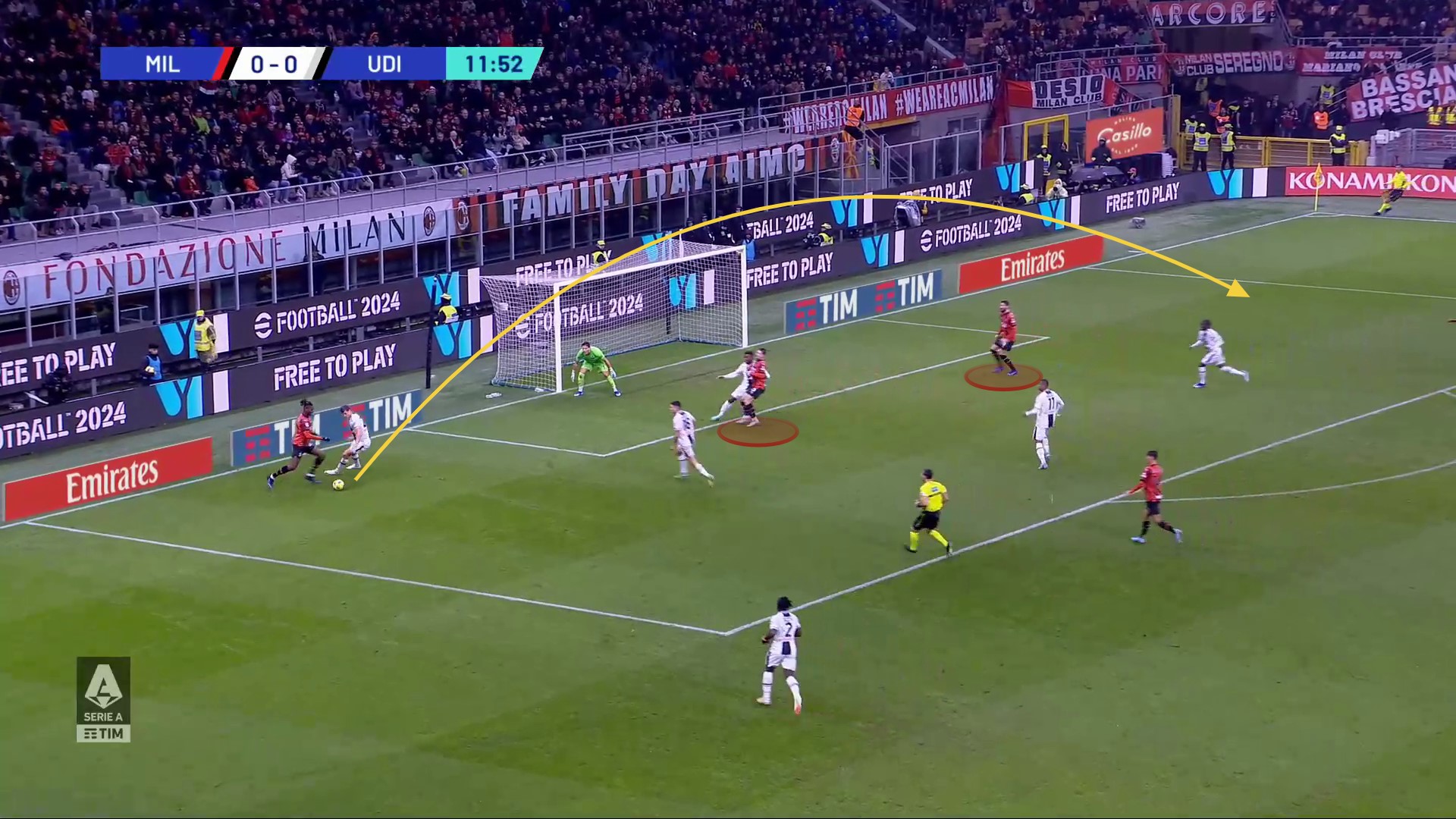
Thirty seconds later, Milan had the ball on the right wing with Musah, but his cross failed to even reach the box with a Udinese player on the edge of the area clearing the danger.
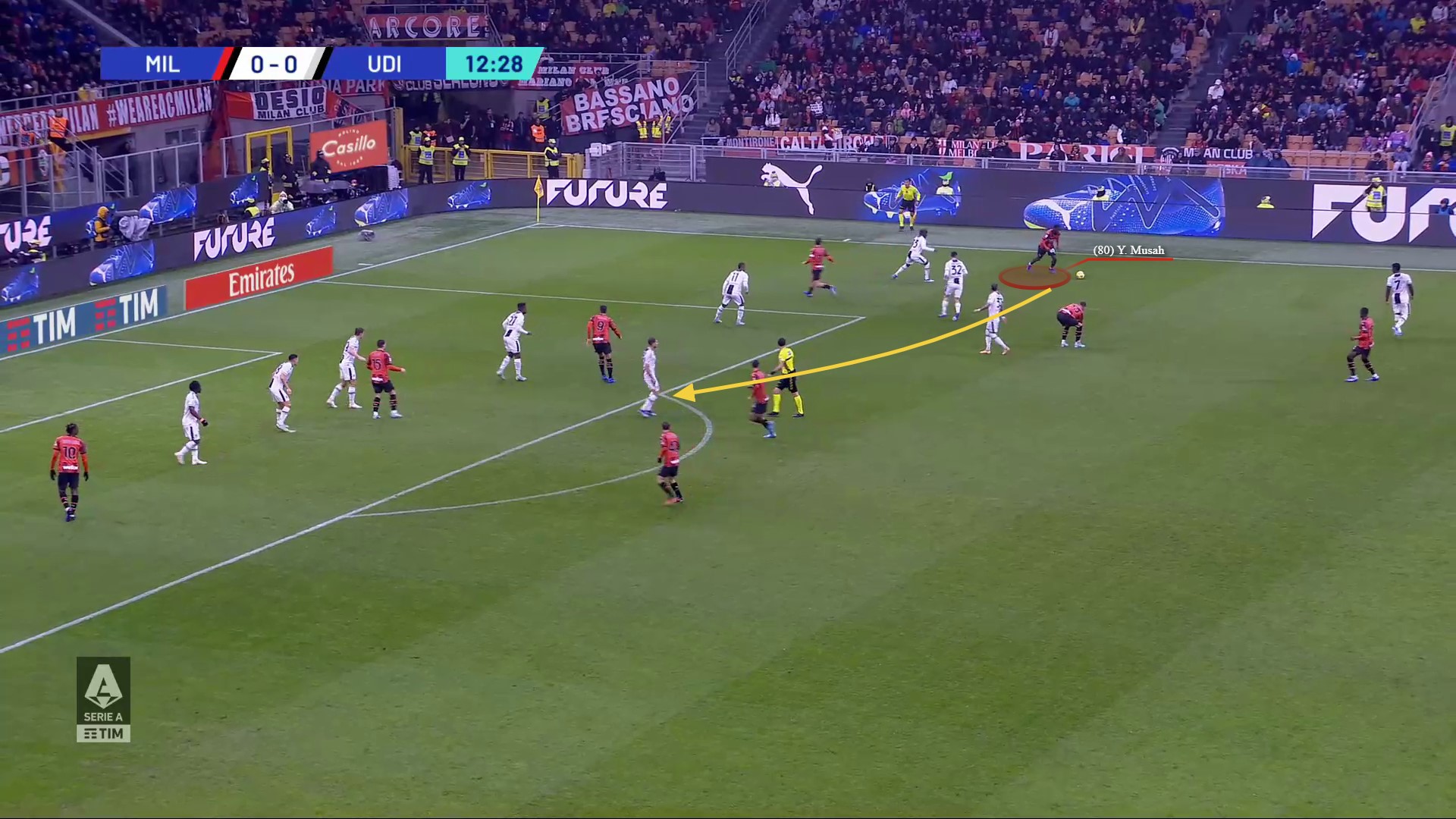
It was not only in crossing situations in which Milan lacked quality, it was also in their decision-making. Just past the half-hour-mark, Milan had a rare passage of play where they managed to progress possession centrally through the Udinese block.
Following a Milan freekick, Tomori was able to carry the ball forward into the Udinese half and as a result of some off-ball movements ahead – namely, Reijnders’ movement into the left half-space pulling Walace with him opening up a passing lane through the midfield line, and opposite movements from Giroud and Jović disrupting two of Udinese centre-backs – a pass was found into Jović’s feet in between-the-lines.
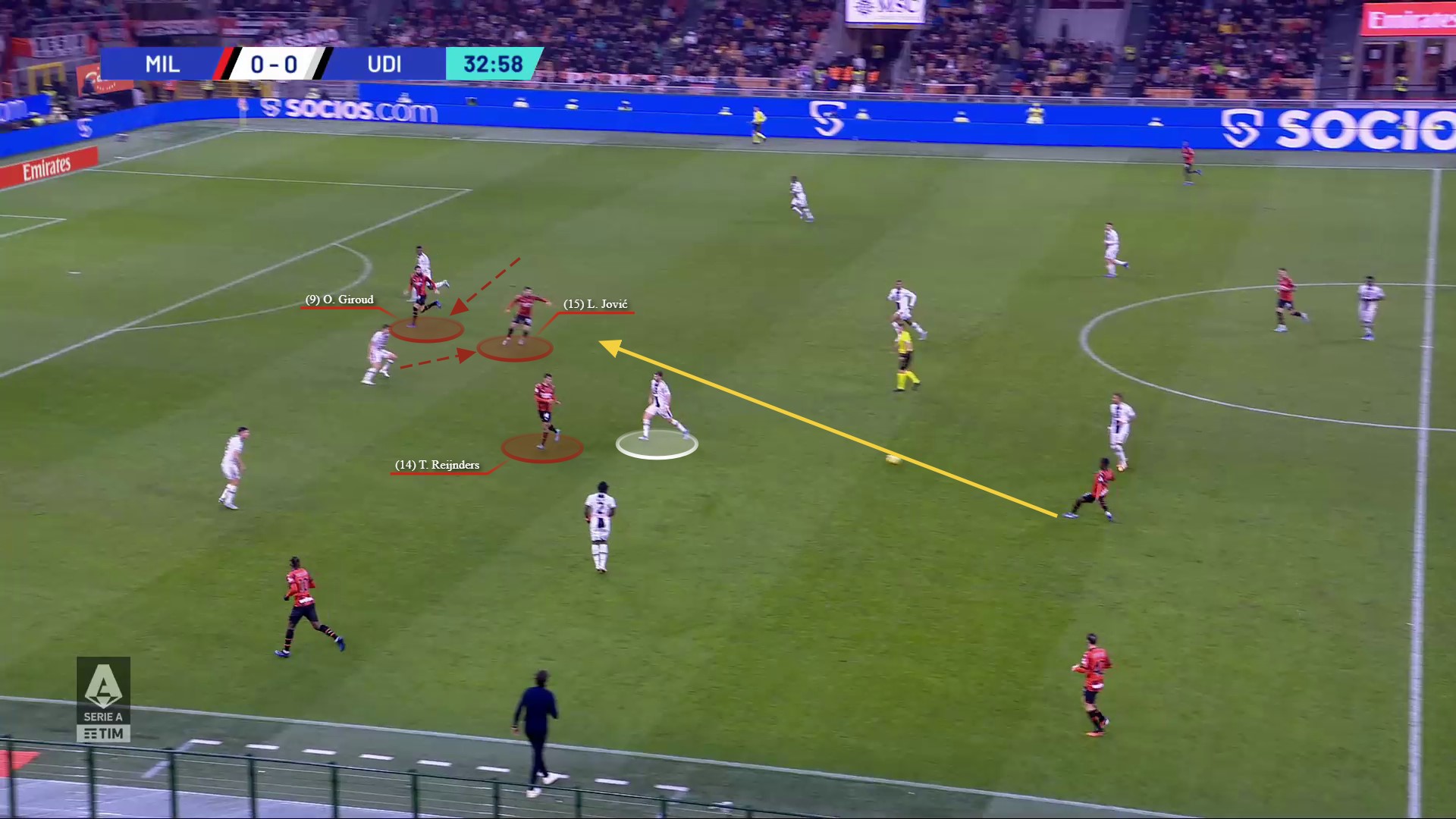
From here, Jović set the ball out wide for Musah in space on the right wing. At this moment, Milan had three players towards the far post to aim for – see Giroud signaling with his arm where Musah should aim the cross.

But despite crossing being a clear instruction for the Milan players and this opportunity appearing to be an opportune moment to follow these instructions (see number of Milan players inside the box), the American winger instead decided to cut inside and shoot – much to the disappointment of Giroud (see yellow circle).

Musah’s shot, following his inversion, did at least force a save from Silvestri but it was another example of Milan wastefulness.
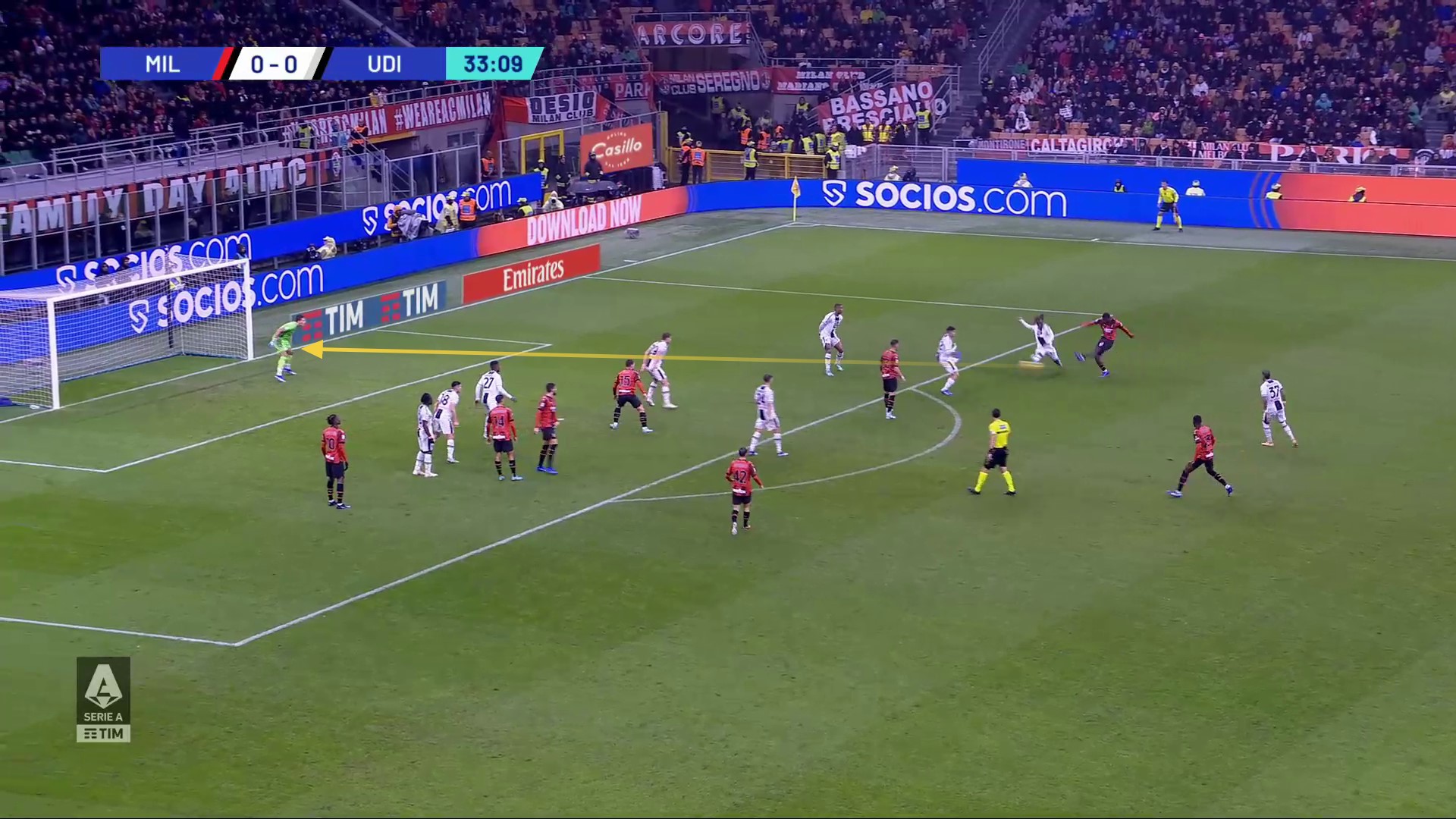
The above examples were a few selected instances from the first-half of Milan lacking ‘quality’ in the final third. But it would be remiss not to additionally highlight Udinese’s equally impressive collective and individual displays during this period too, as these defensive performances also contributed to Milan’s attacking underperformance.
Out of possession, Udinese were highly organised and well drilled to deal with Milan’s main threats. Whilst the overall team structure maintained compactness to restrict central progression, forcing Milan into wider areas, the defensive units in these wider areas worked collectively to limit the threat when Milan had the ball out wide too.
And, in addition to that, when called upon, a number of Udinese players also performed well in duels too, namely Ebosele who won 58% of his defensive duels across the whole game.
Here are some examples in practice to showcase Udinese’s effective, collective and individual, defensive displays.
Early in the 9th minute, Musah had the ball on the right wing 1v1 against the opposition left wing-back. Fancying his chances, the American midfielder took on his man but could not beat Zemura who won the duel to regain possession.

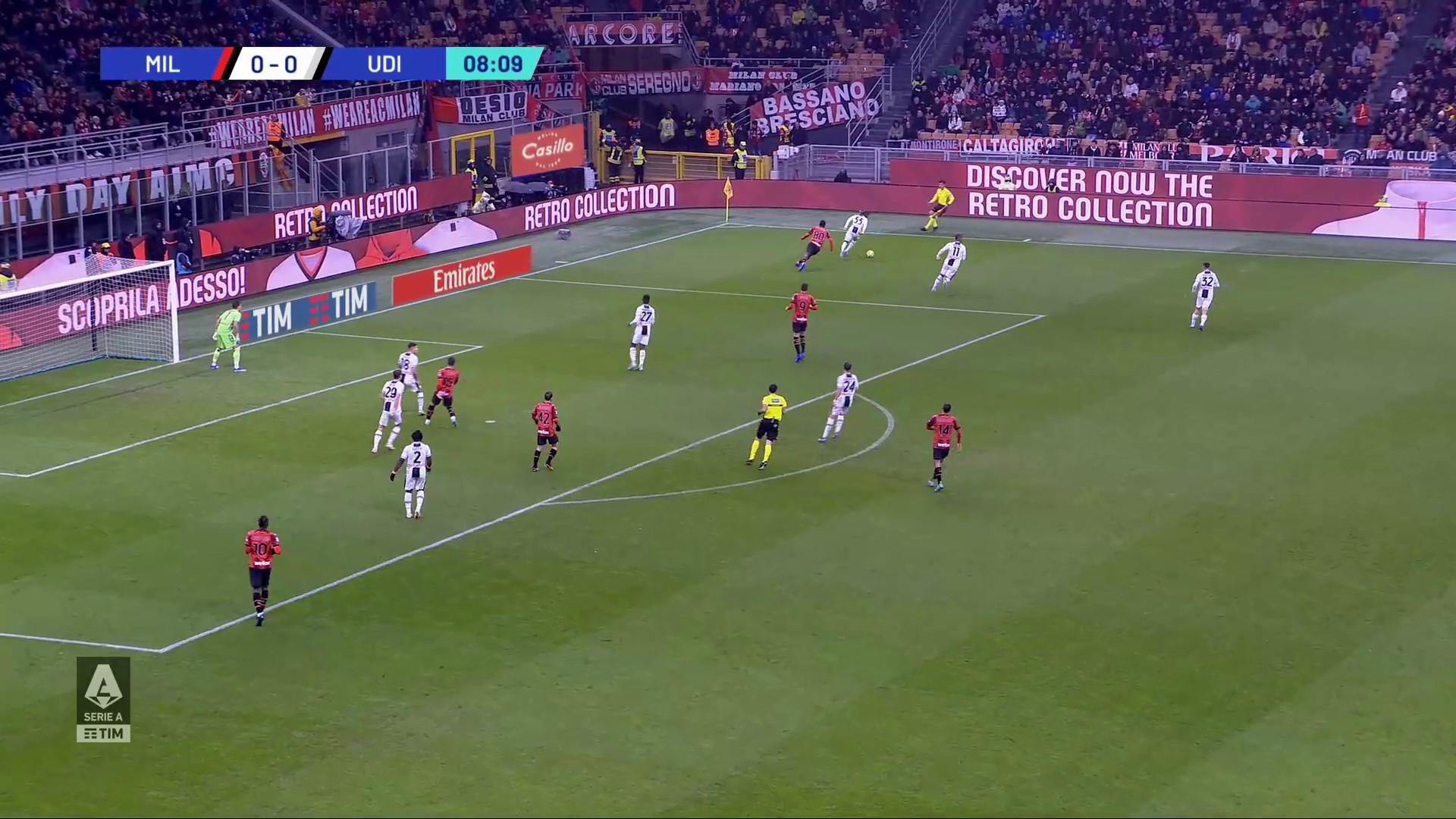
But with the majority of Milan’s attacks coming down their left flank, it was the right-hand side of Udinese’s defensive block which was called into the most frequent action.
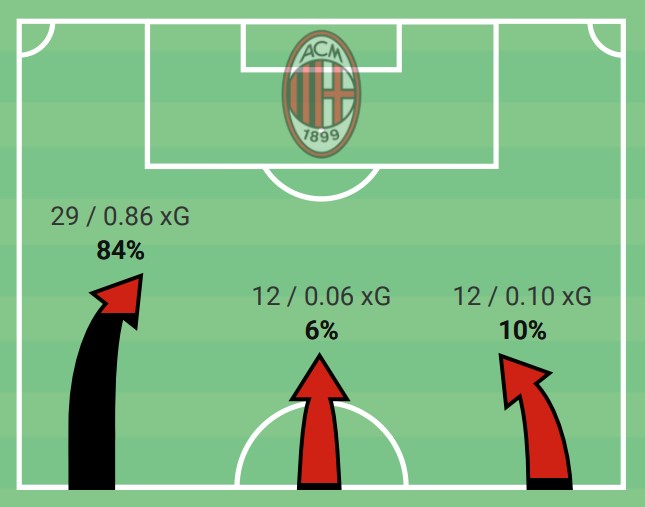
Here, in the 11th minute, Milan attempted to work a passing combination between Reijnders and Leão to get the latter in behind the Udinese backline.
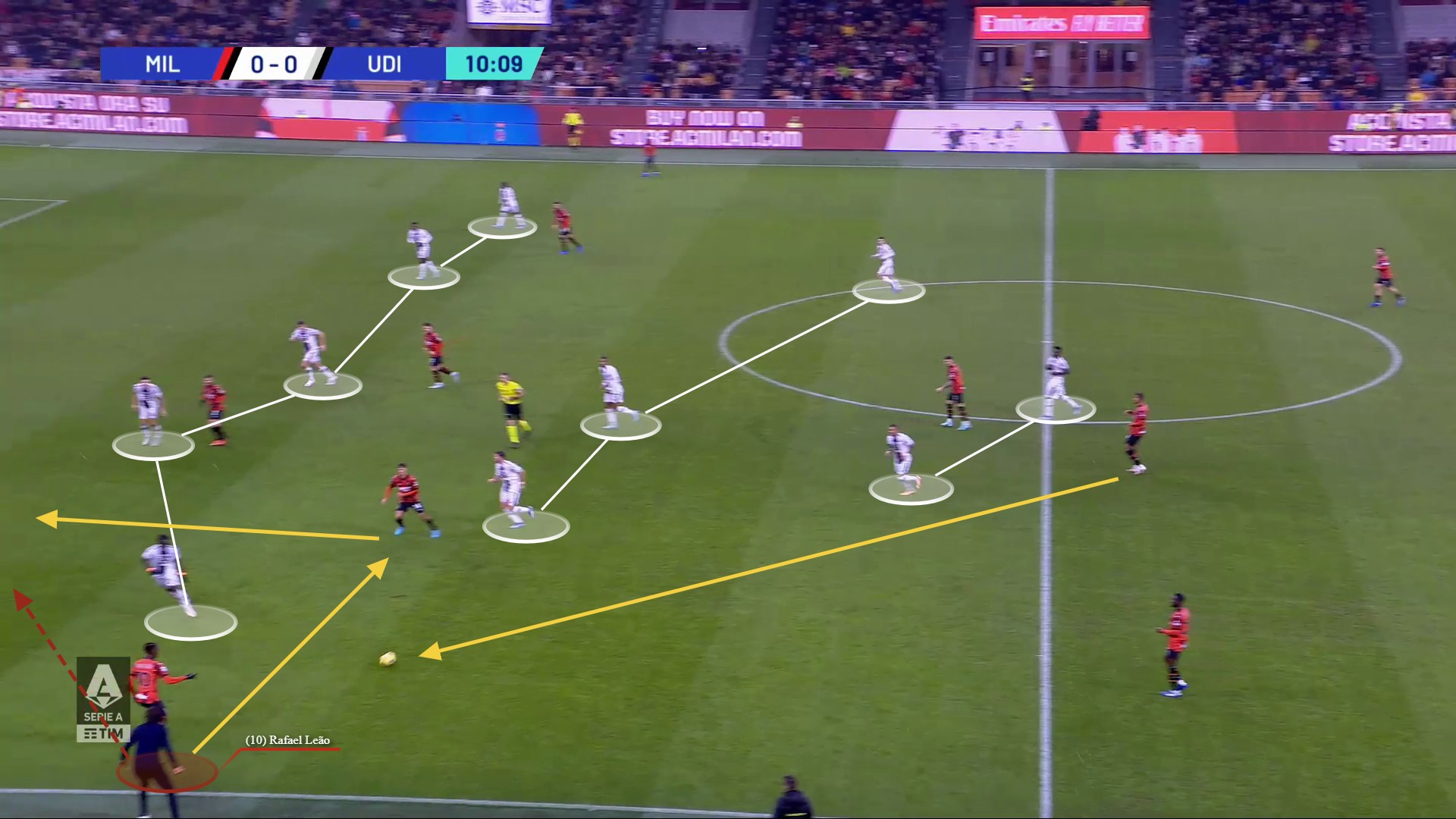
But a recurring theme throughout the game was, even when Leão was able to bypass the right wing-back, the right-sided centre-back, Nehuén Pérez, was invariably lurking in behind to cover. As was the conclusion to this Reijnders and Leão’s one-two attempt.
(Note below how this covering tackle from Pérez was vital, as Milan had a 3v3 situation across the rest of the Udinese backline.)

This right-sided defensive unit of three Udinese players – Ebosele, Pérez and Samardzic (right-sided central midfielder) – worked tirelessly to ensure they maintained coverage against Milan’s threat on the left flank.
As seen in the 30th minute, when Leão was found on the left wing, helped by Florenzi moving infield to create a direct passing lane.
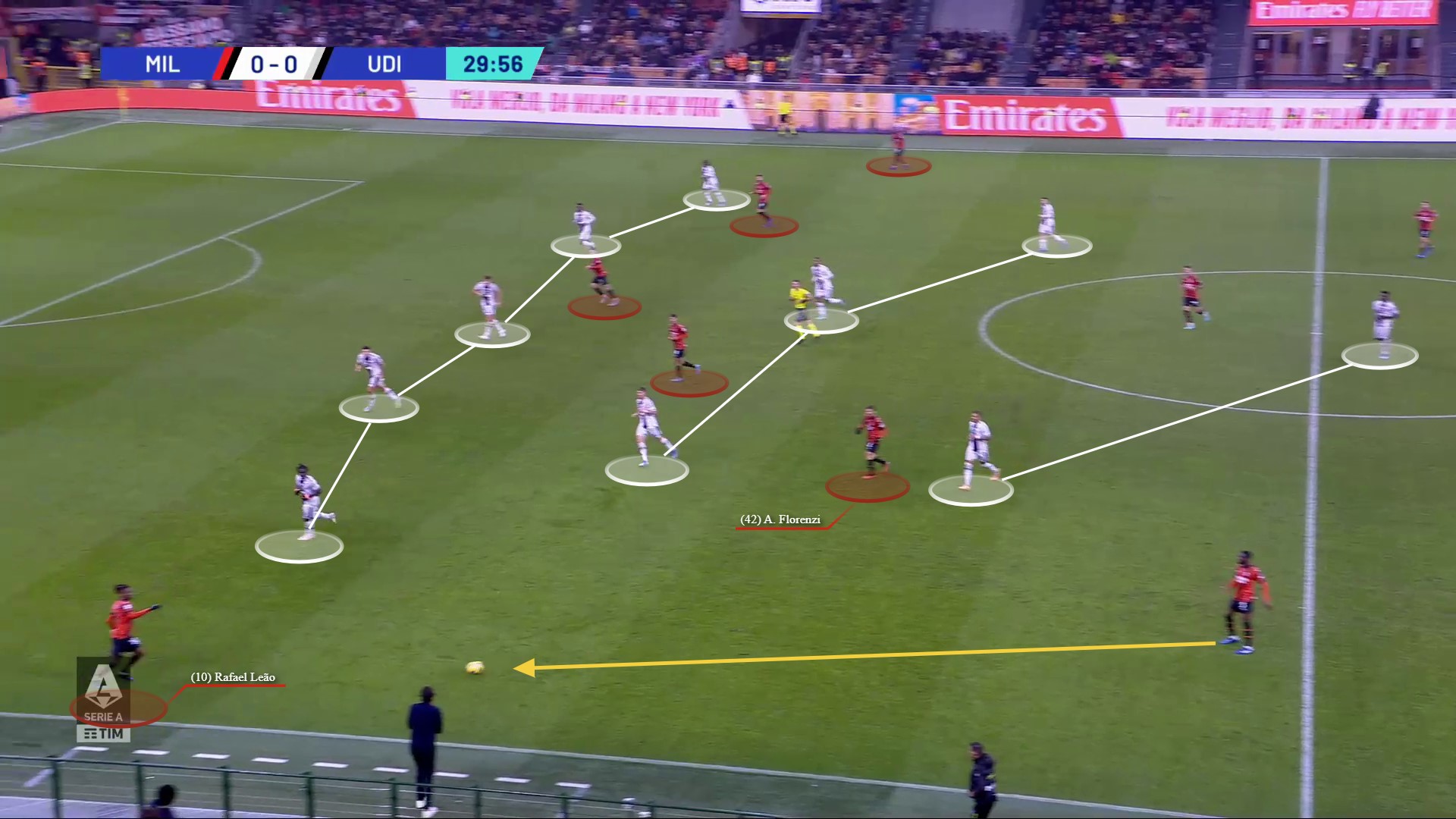
But once in possession of the ball, Leão had to contend with the adversary of Udinese’s right-sided defensive unit all on his own (more on this shortly).
Ebosele was content to show Leão down the line, in the knowledge that 1) he was confident he could deal with the threat himself but also 2) if he was beaten, he had Pérez in behind to cover. Completing the unit was Samardzic who provided cover on the inside, in the event that Leão chose to cut infield.
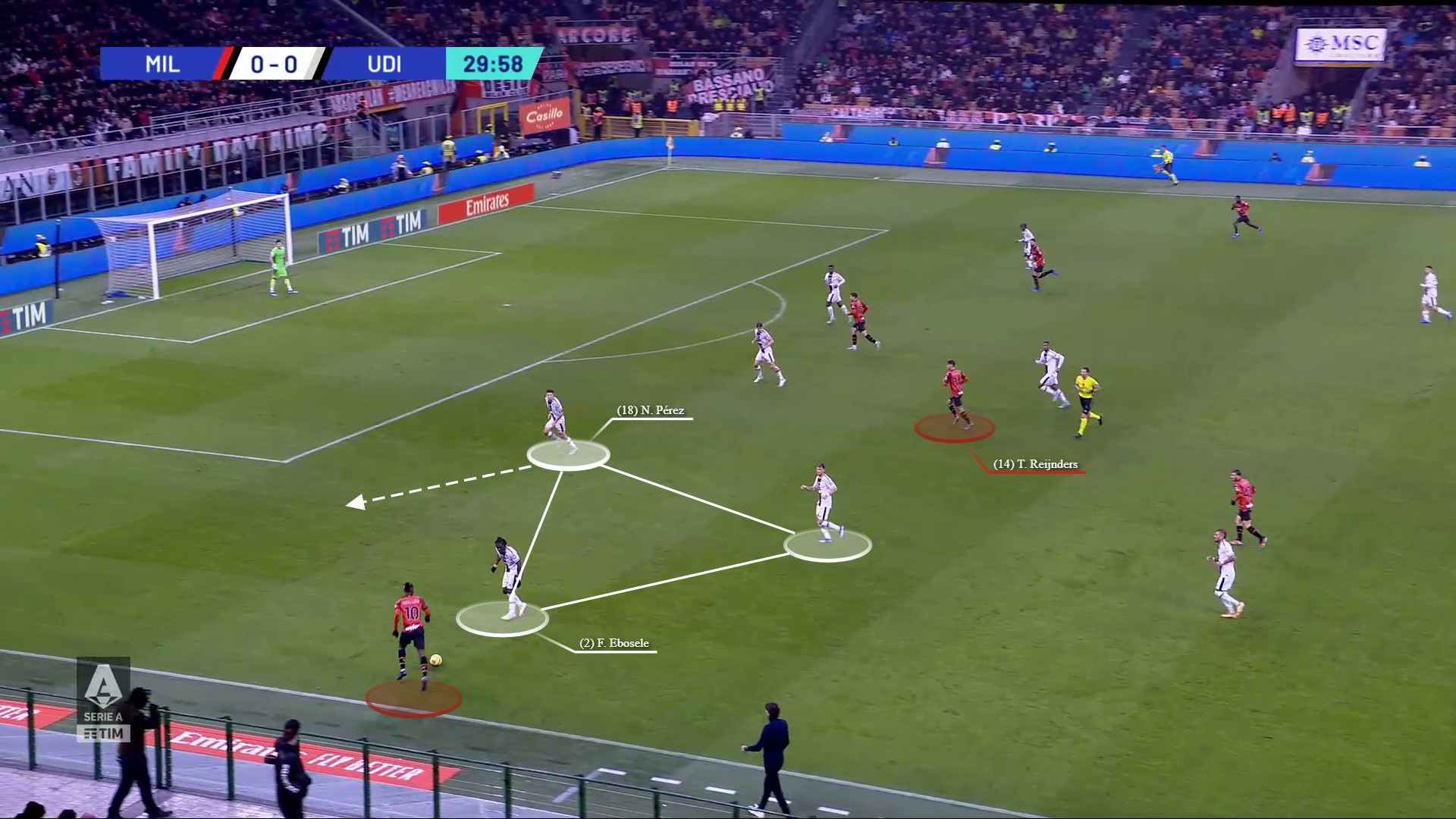
Leão opted for the take-on down the line but was met with a sliding Pérez tackle to win the ball and stop the attack.
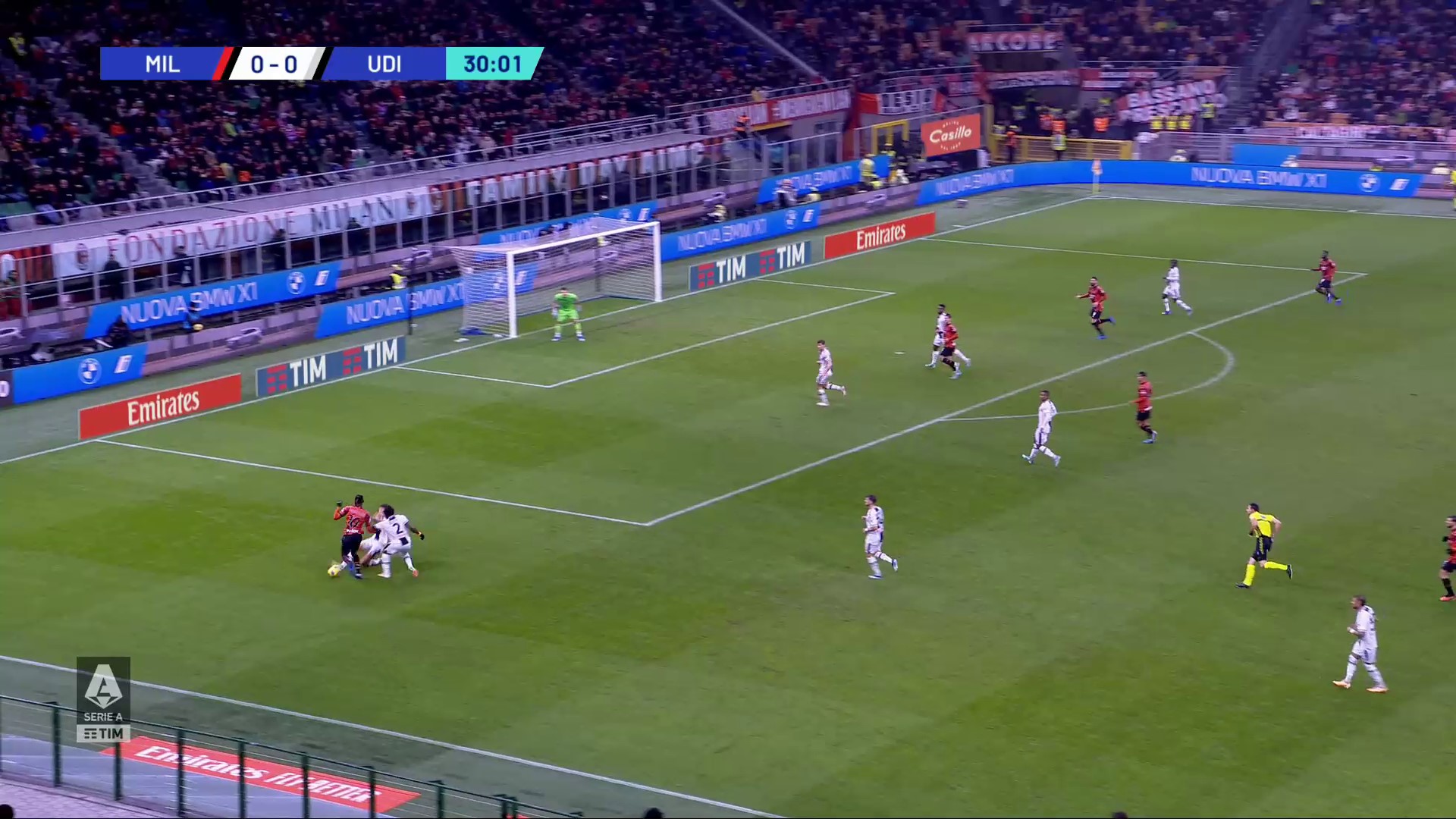
Three minutes later, a similar scenario occurred with Leão again found on the left wing. But again, he had multiple Udinese players to contend with. This sequence concluded with one of Ebosele’s many duel successes.
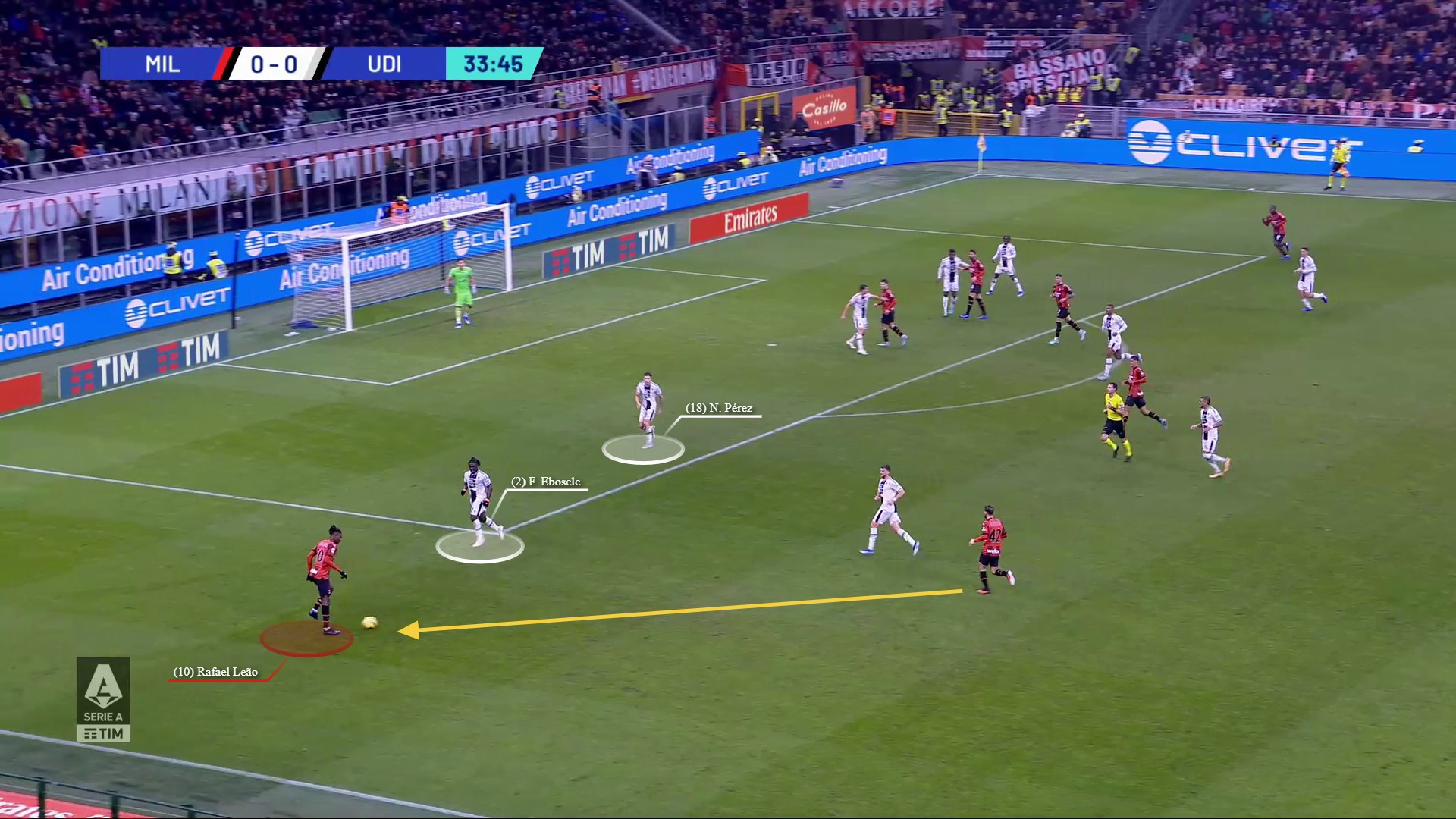
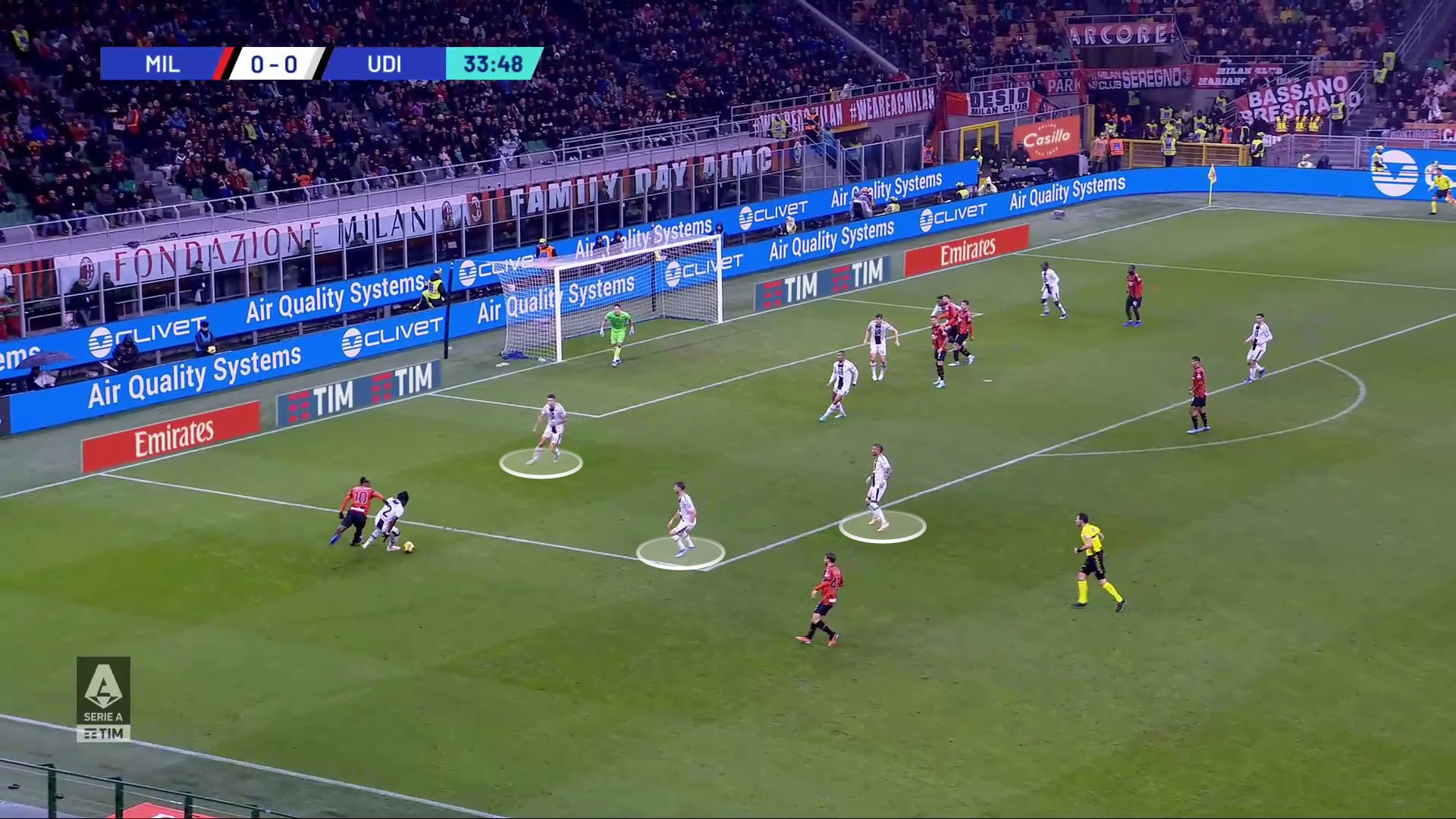
So whilst Udinese’s execution of their defensive gameplan was having an impact, at times, Milan were also making the opposition’s jobs a bit easier.
With Milan having so much possession in the final third – achieving 69% Field Tilt, a measurement of the share of possession a team has in a game, considering only touches or passes in the attacking third – Milan did not do enough to try and disorient the Udinese defensive block.
There were examples of this above, where Leão was left isolated against Udinese’s right-sided defensive unit. And whilst in certain attacking moments it will be intentional for Milan teammates to leave Leão alone on the wing – to avoid blocking the space in which he wishes to attack – in the highlighted instances above, a supporting teammate would have helped occupy an opponent, thus creating more space for Leão to exploit.
For example, looking back at the attack from the 30th minute, a forward run from Reijnders here to occupy the space between Pérez and the central centre-back would have given Pérez a decision to make – release and cover in behind Ebosele or stay, in fear of Reijnders being found in behind.
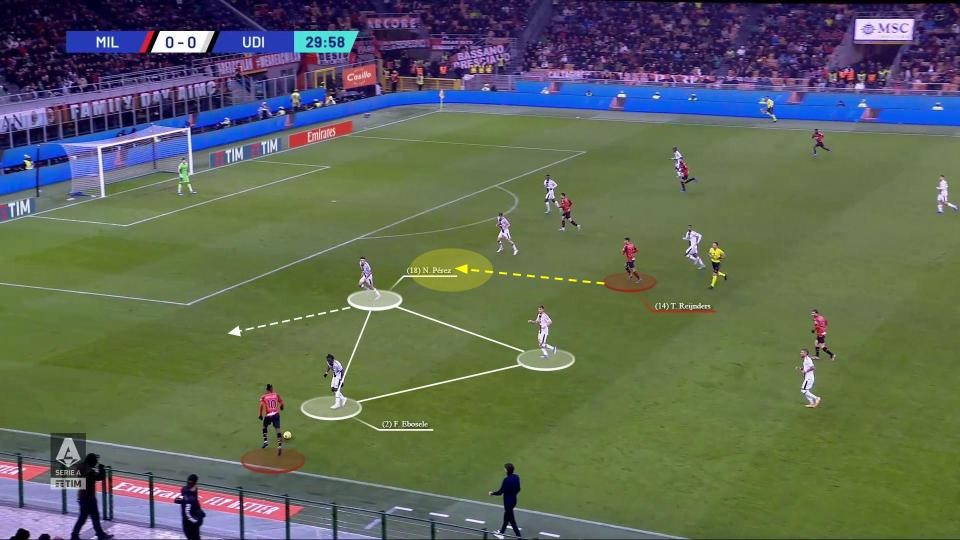
An example of the upsides that could be generated from Milan players occupying opposition players was evident in the home team’s most threatening passage of play in the first-half. In the 38th minute, Milan had circulated possession in the Udinese half, shifting the opposition block from side-to-side which created space for Florenzi on the (Milan) left-hand side.
In this instance, Samardzic (white spotlight) was prevented from jumping to engage Florenzi by Reijnders’ positioning on his blindside. Therefore, Ebosele was tasked to jump and engage.
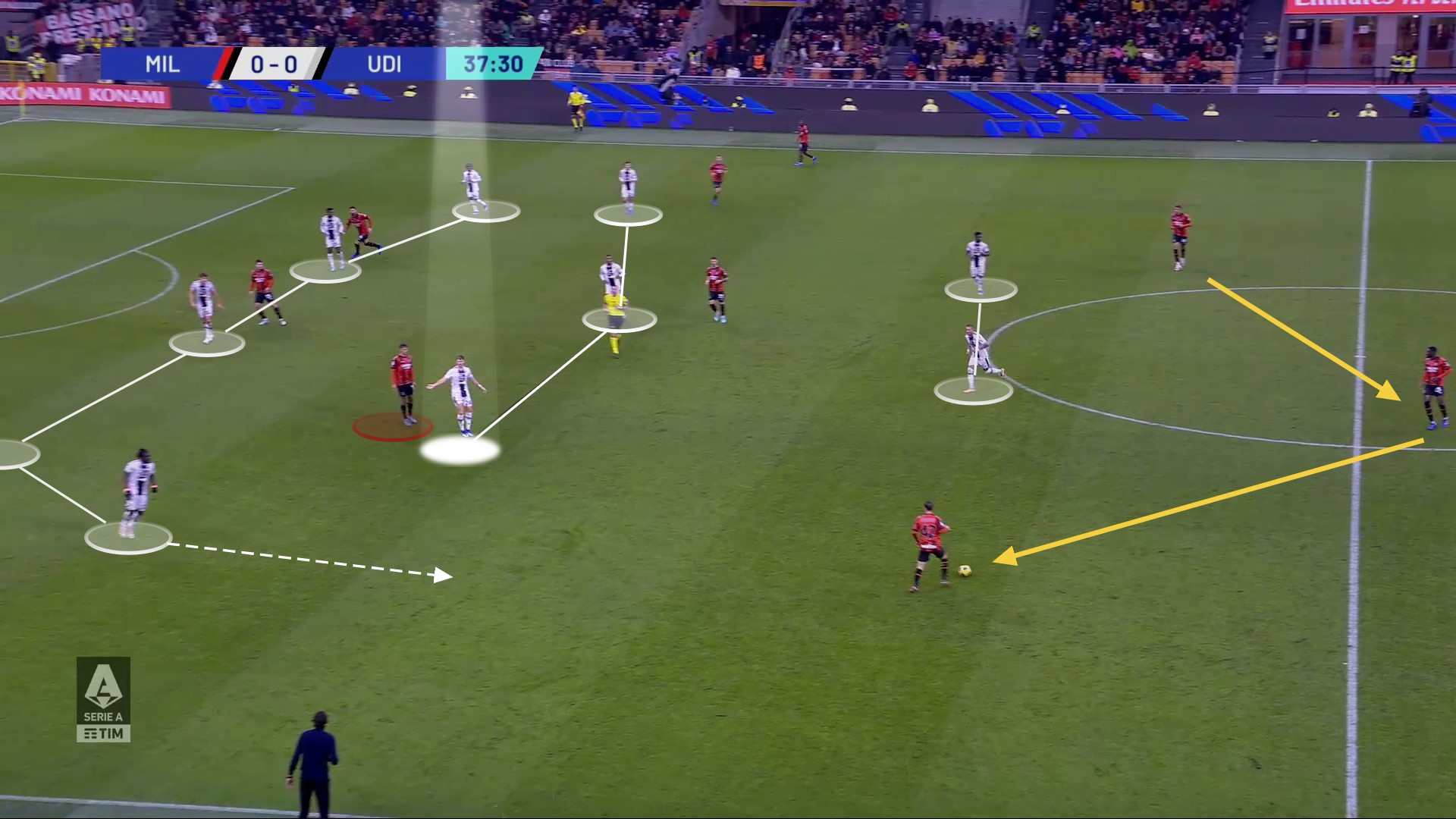
After enticing Ebosele forward and then passing inside to Krunić, Florenzi carried on his forward run into the centre of the pitch, and his Bosnian teammate made a pass out wide to Leão – aware that due to the Udinese right wing-back having been pulled inside, the Portuguese attacker was in a 1v1 on the left wing.
But what Krunić was unaware of, or opted against playing, was a lofted pass towards the advanced animated duo of Reijnders and Giroud who were in space in between the Udinese defensive unit – created through Milan disorientating the Udinese defensive system.
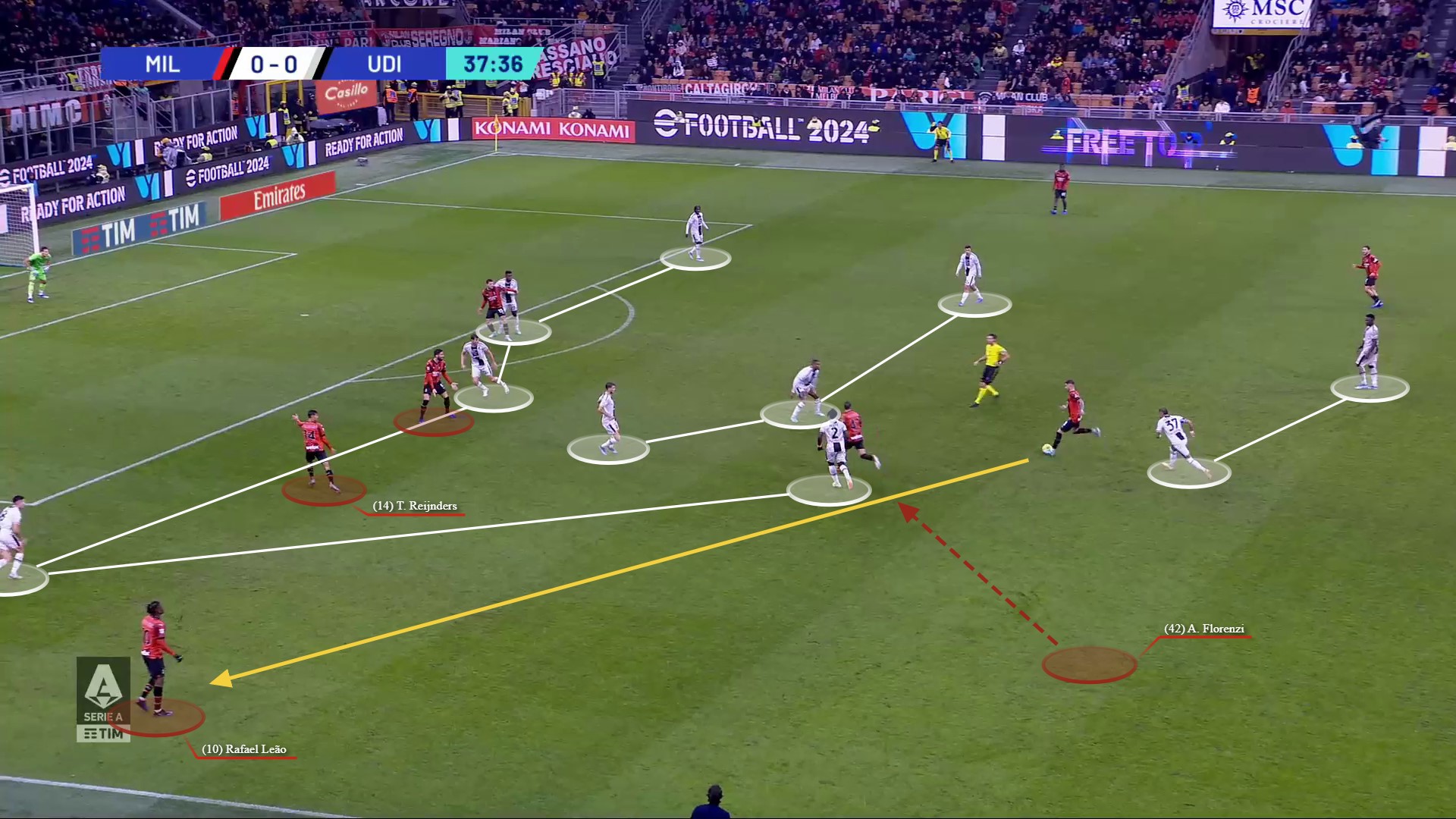
The attack was still live though, and after receiving the ball and having time and space to choose his next action, Leão made another inswinging cross into the penalty area – where, as you can see below, Milan had three players in 1v1 match-ups but also one player completely unmarked.
The free Florenzi (red spotlight) had continued his forward run into the box and got on the end of Leão’s cross but despite only having the goalkeeper to beat, he failed to connect with his shot and Silvestri was able to claim the ball.
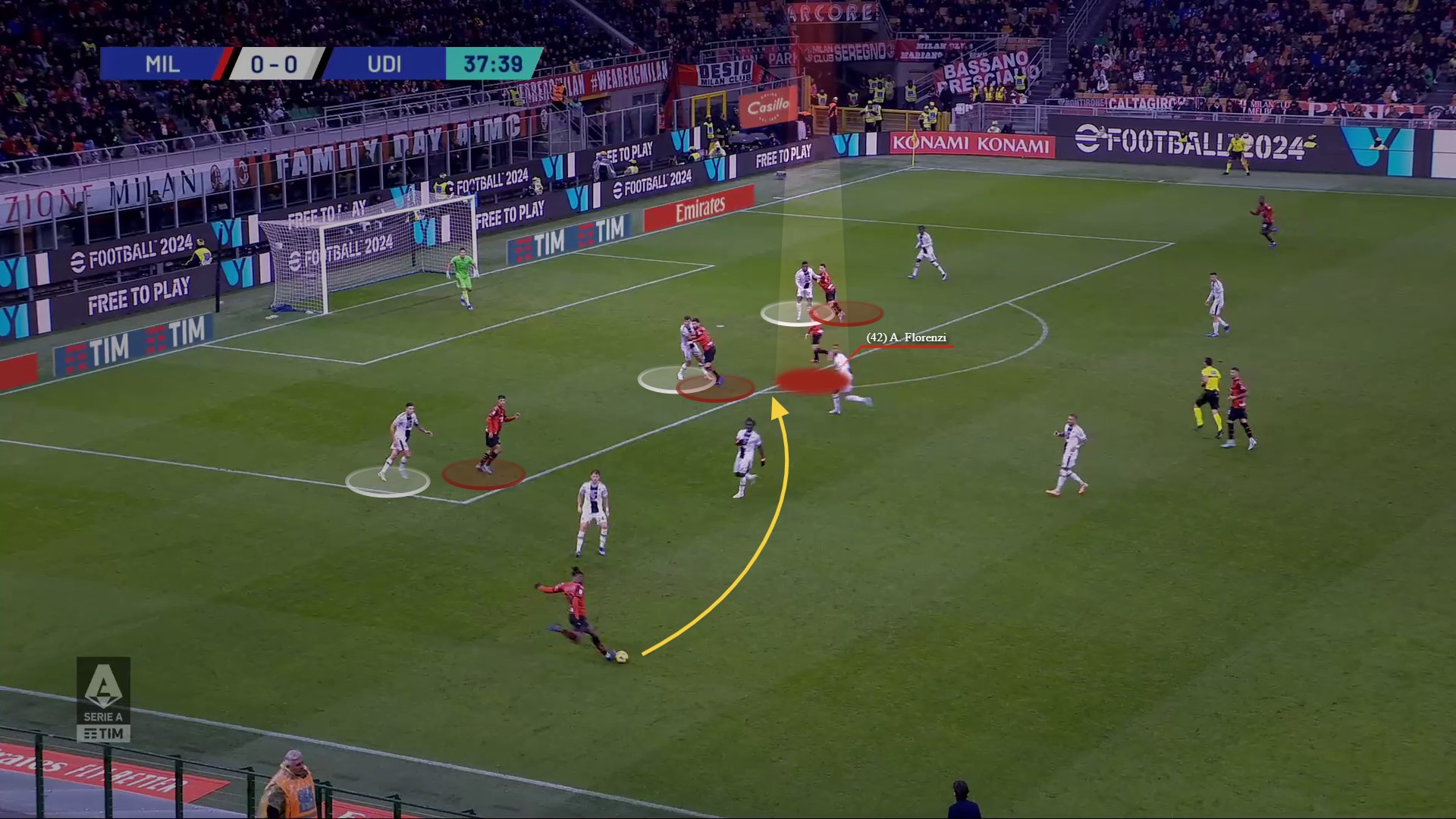

At half-time, Pioli had evidently seen enough of Milan’s play and made two substitutions, including bringing off Jović, who was not helped by Milan’s poor quality crossing in the first period but was also guilty of nine ball losses – the joint 3rd highest in the team, but the three guiltiest players (Leão with 17, Giroud with 11 and Calabria also with 9) at least each played a full ninety-minutes.
However, in the second-half, the themes of Milan lacking quality and Udinese’s defensive organisation continued. And what was most disappointing from the home team’s perspective, was a lack of alternate ideas on how to breakdown the opposition.
In the opening fifteen-minutes of the second half, Udinese had their most dominant spell of the game – having 59% possession. And this eventually led to the away side taking the lead through a penalty in the 63rd minute. From this point, and with the game state changed, Milan began to see more of the ball and therefore able to generate more attacking moments. But the same issues kept repeating themselves.
In the 67th minute, following a Milan counterpress, they found Leão who, in his fairness, attempted to make something happen by driving forward into the box.
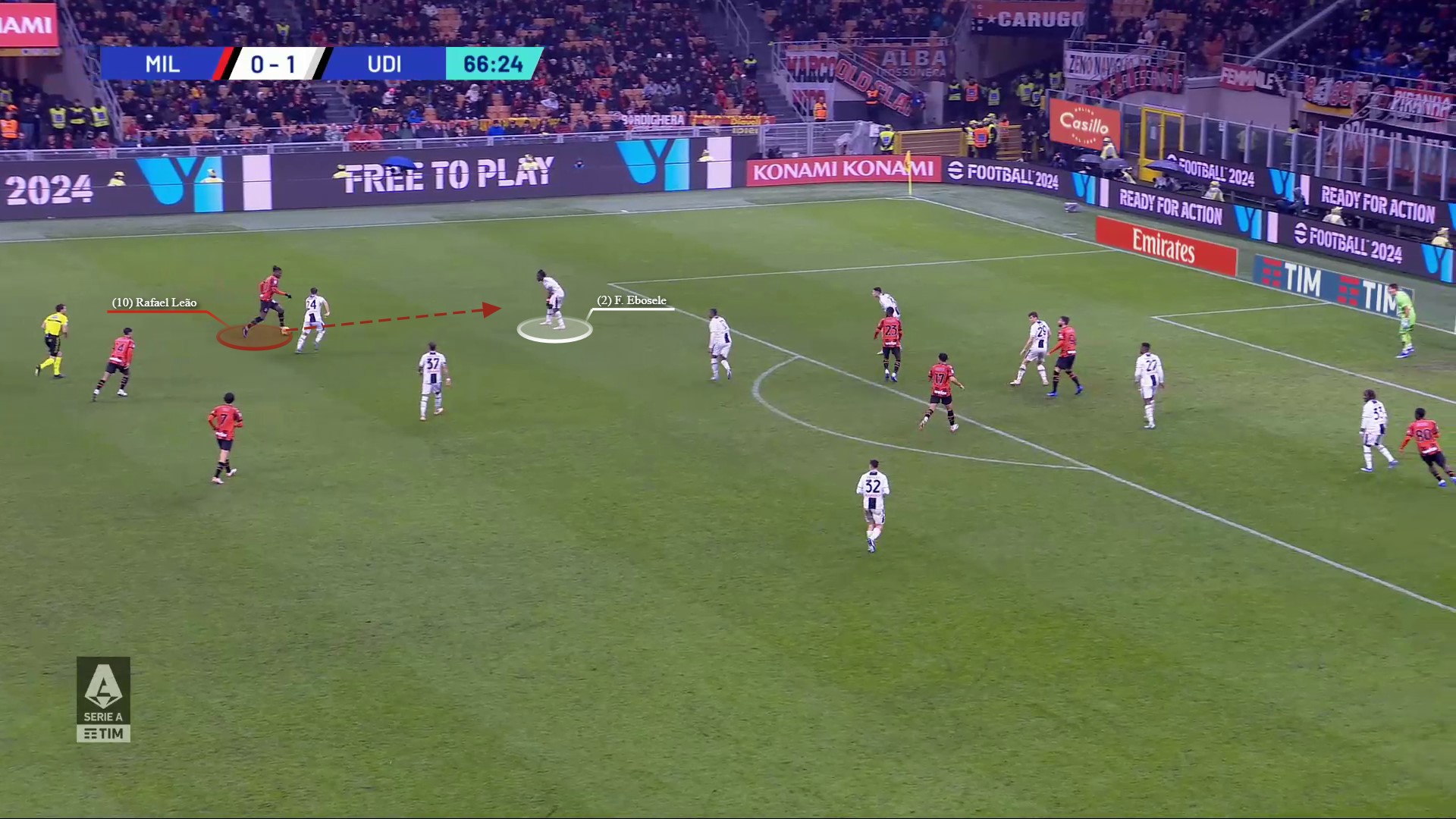
But, in his way was the relentless Ebosele who tackled to concede the corner but prevented a crossing opportunity where Milan had a 4v3 overload inside the box.
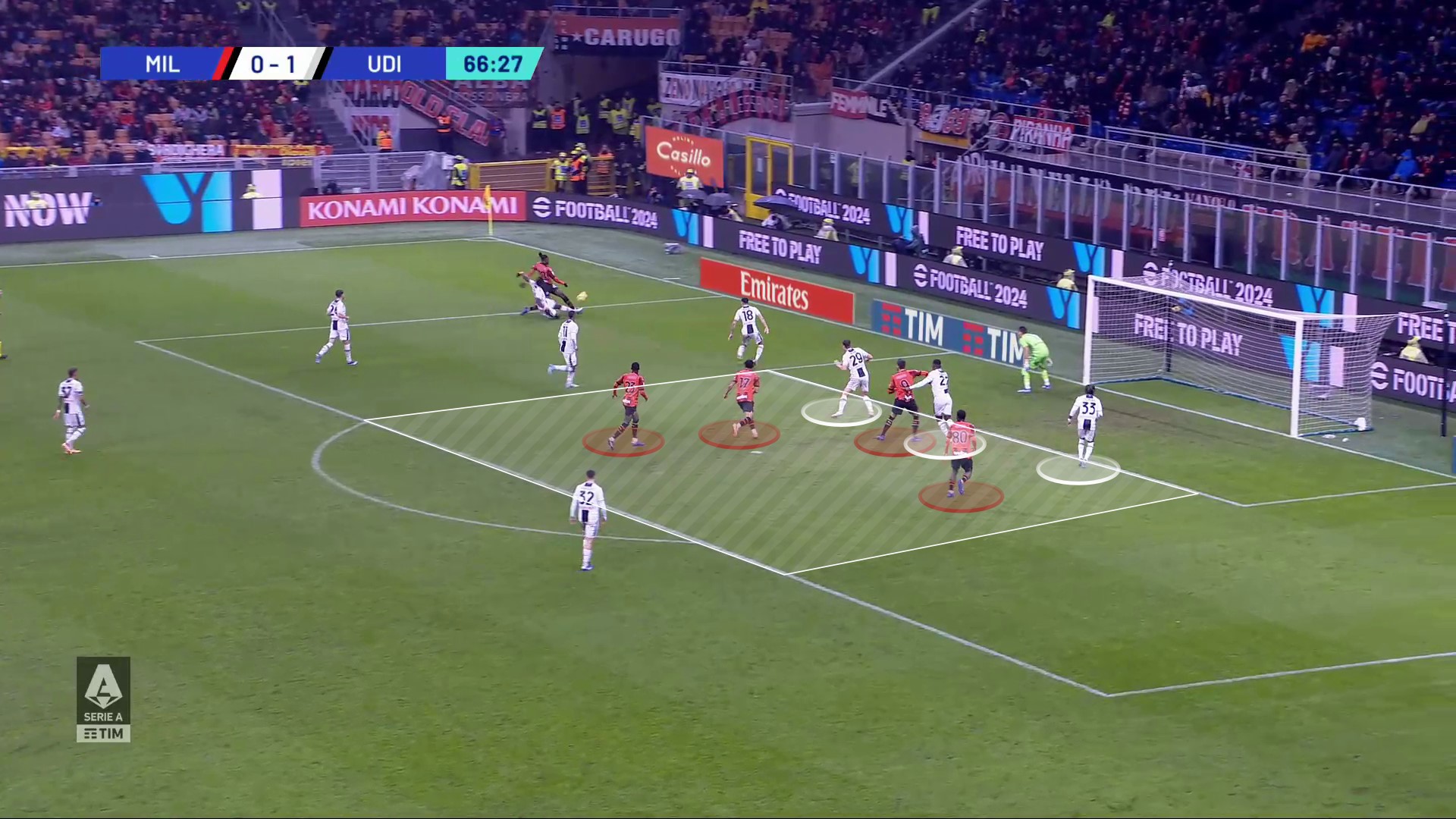
In the 77th minute, Milan tried their luck down the right wing, when substitute Adli found Calabria in space on the outside of the Udinese block.
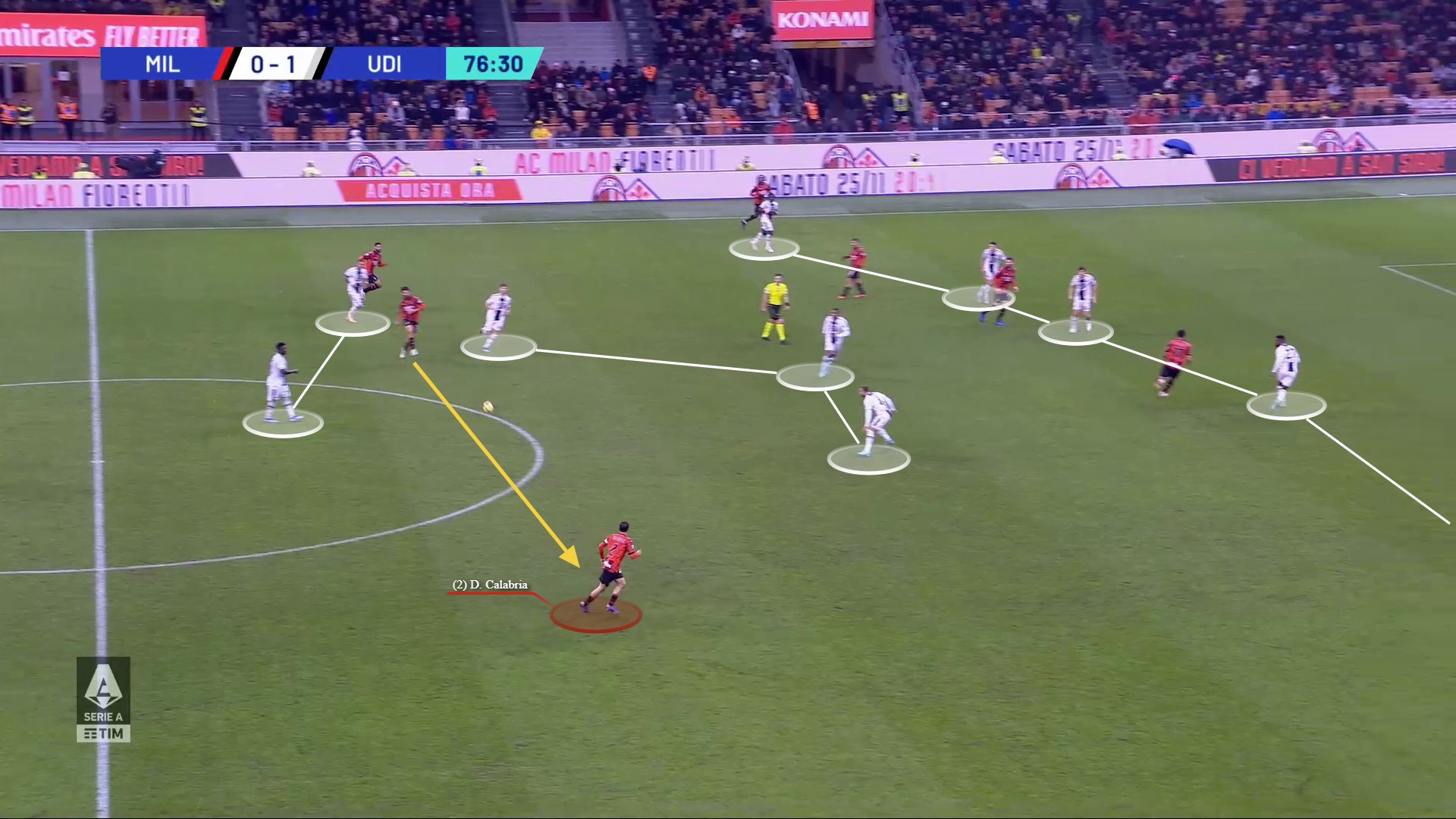
From here, Calabria carried forward with the intent to cross, seeing a potential 4v4 match-up in the opposition penalty box.

However, the right-back’s actual cross failed to beat the first defender and was easily headed clear – much to Giroud’s (red spotlight) continued frustration.
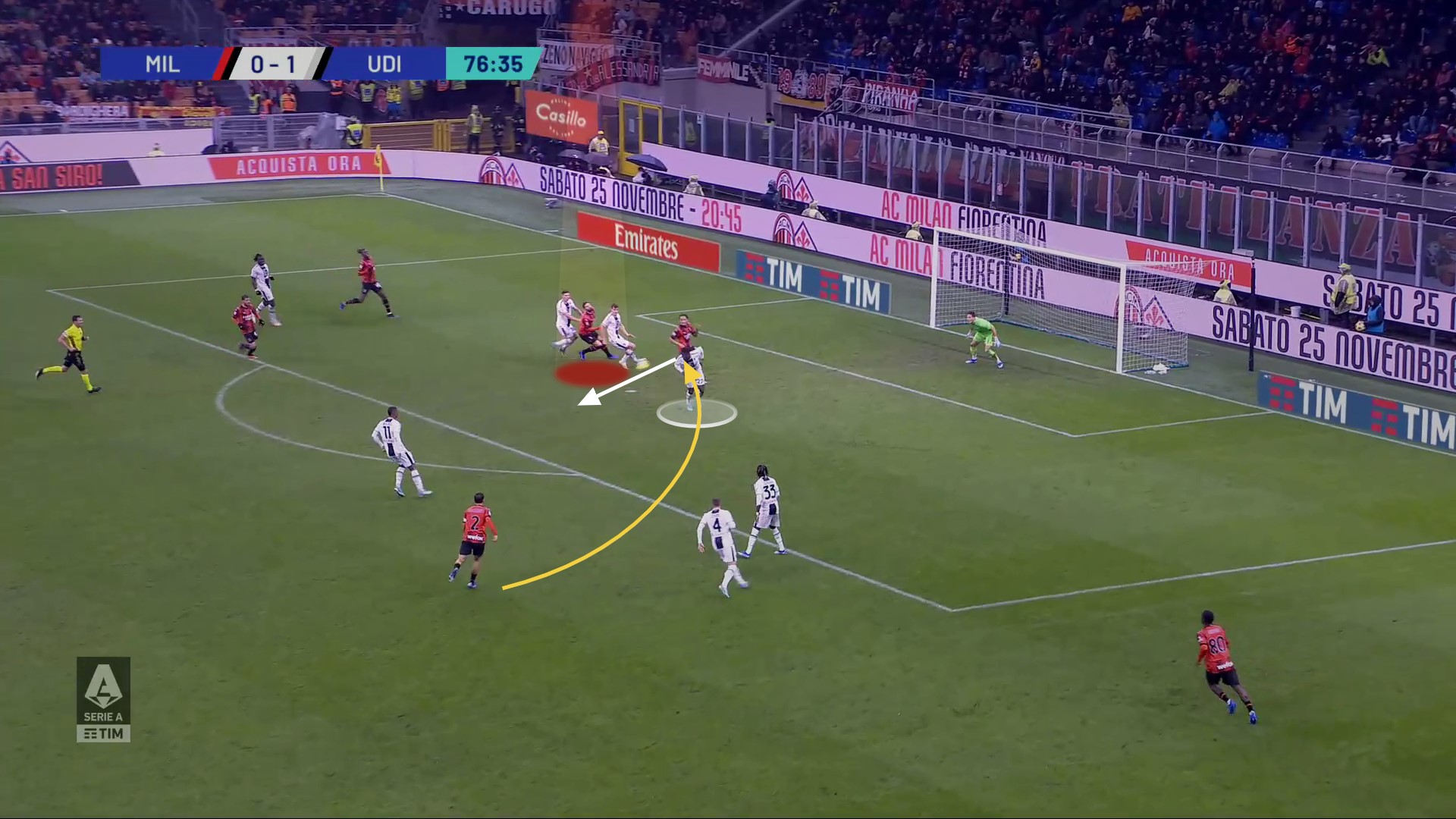
But Milan soon regained possession and recycled the attack down their left wing a minute later. In this instance, Milan again showed the benefit of occupying opponents within the right-side of the Udinese defence, with substitute Ruben Loftus-Cheek making a forward run to give Pérez a decision to make, in the event that Leão won a 1v1 duel against Ebosele down the line.
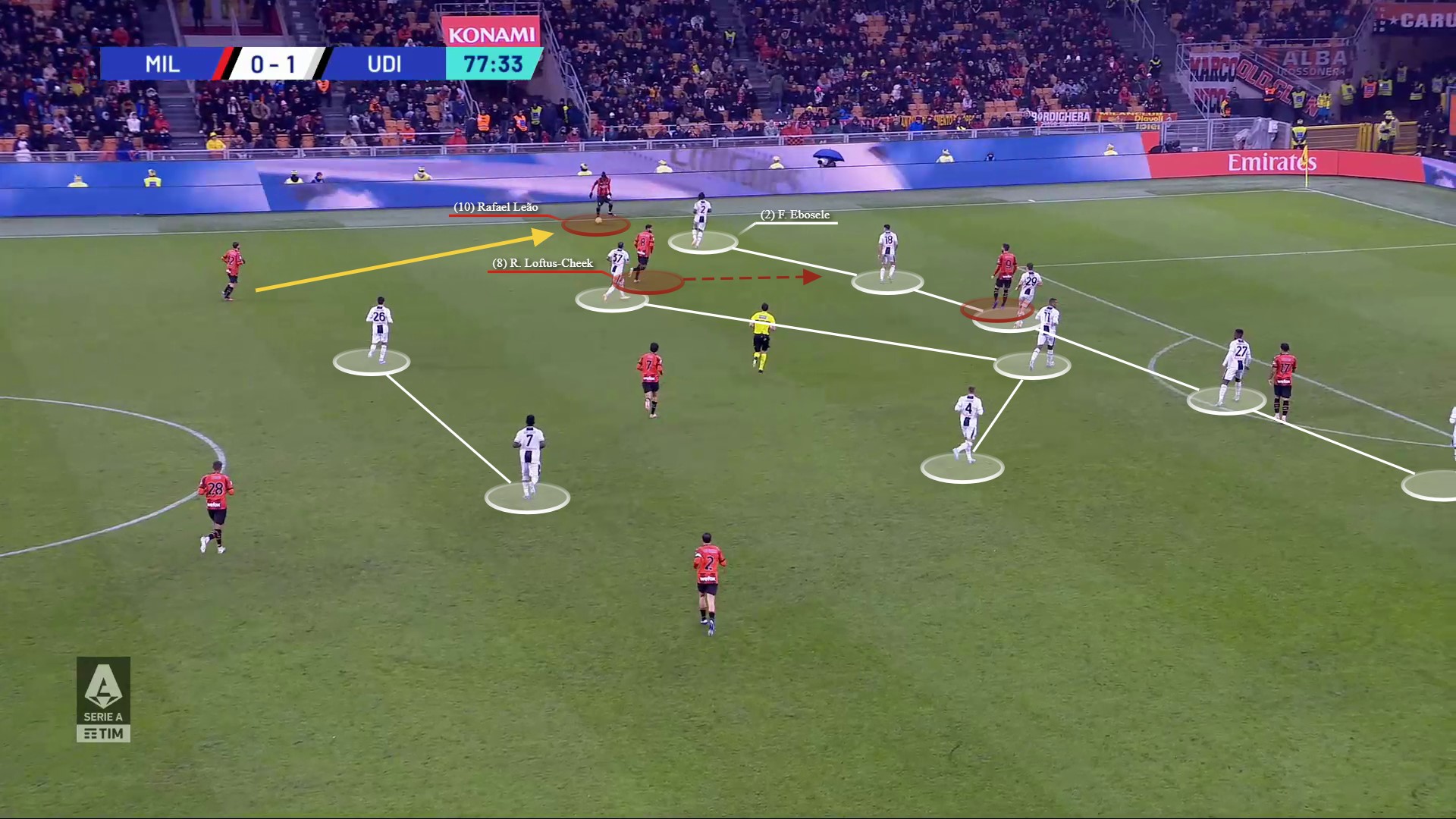
It turned out irrelevant, with Leão rejecting the opportunity to attack on the outside with potential space to exploit, and instead reverted to his inswinging cross – perhaps noticing a potential 3v3 situation inside the box. However, in another example of Udinese players being well drilled, central midfielder Walace had recognised this danger and dropped into the backline to provide coverage and he was in fact the player to head Leão’s cross clear.
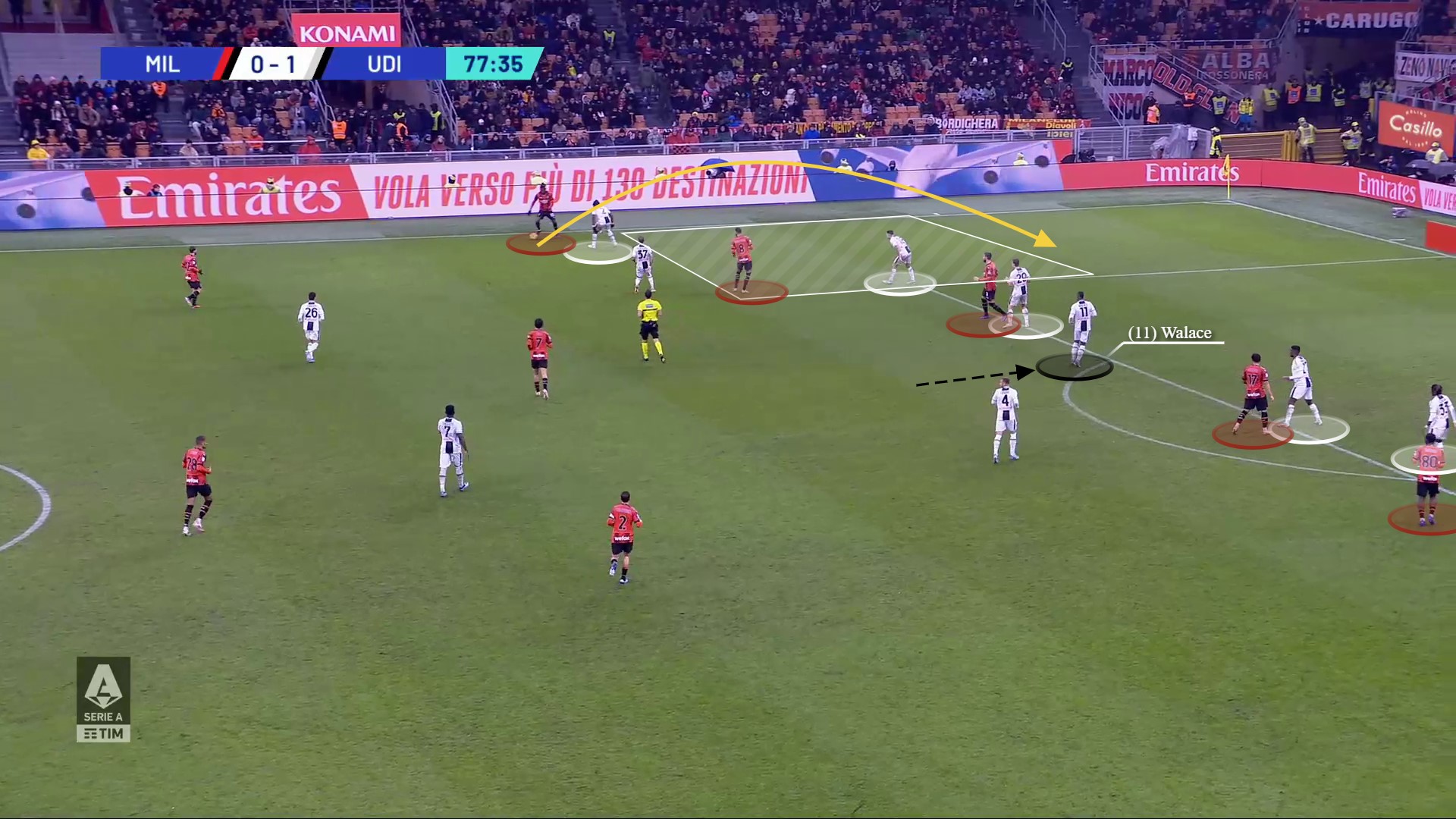

With Milan threatening to go out with a whimper – failing generate either high quantity or quality chances for the majority of the second period – in the 90th minute, they finally called the Udinese goalkeeper into genuine action.
Against a now fully Udinese low block, Milan, as usual, attempted to generate an attack via their left flank.
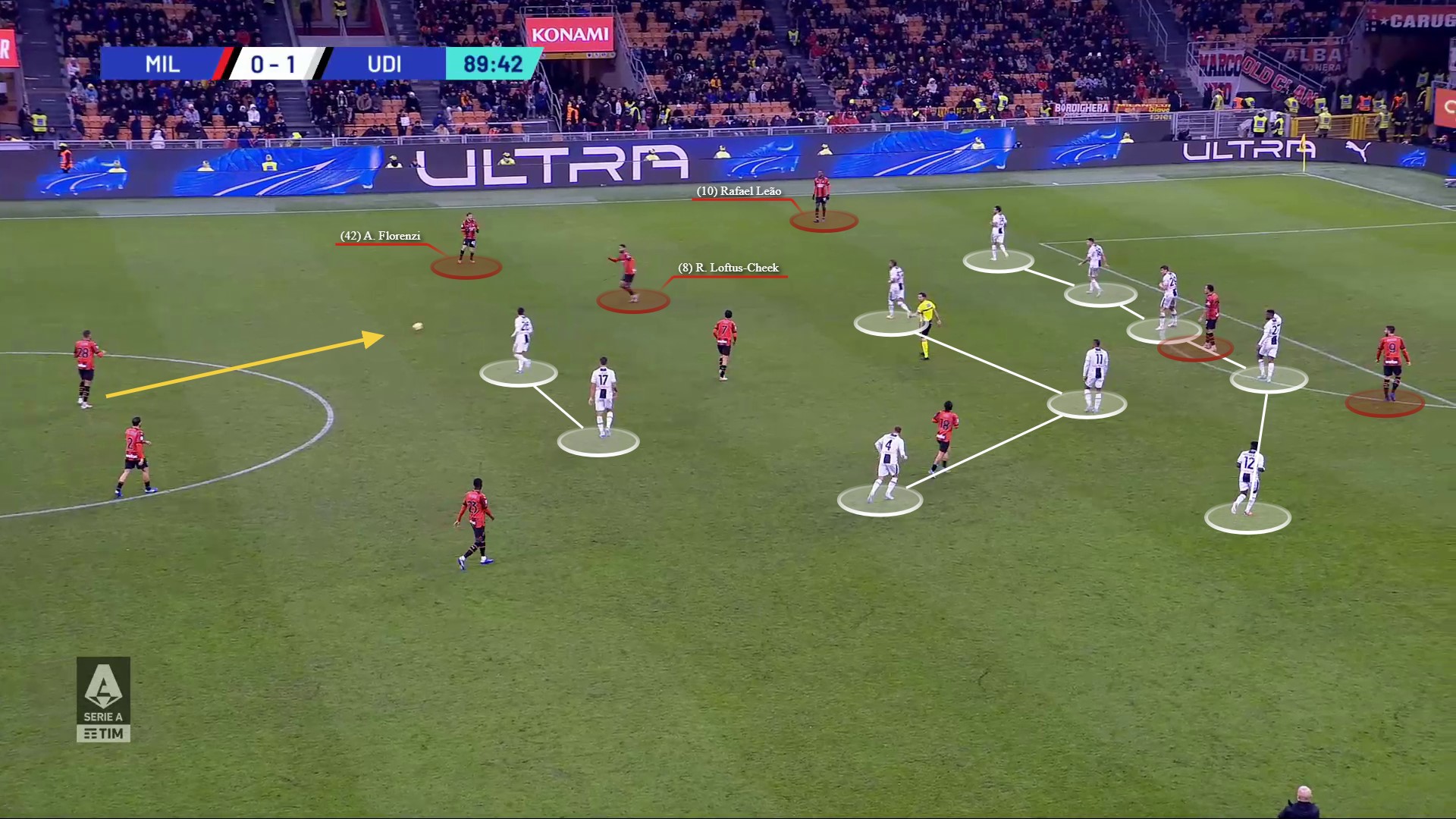
In another example of the ‘upside’ off-ball movements of nearby teammates could help generate Milan (by disorientating opposition players), a Florenzi overlapping run helped create a moment of confusion on the right-hand side of the Udinese defence. With Milan having a 3v3 inside the box…
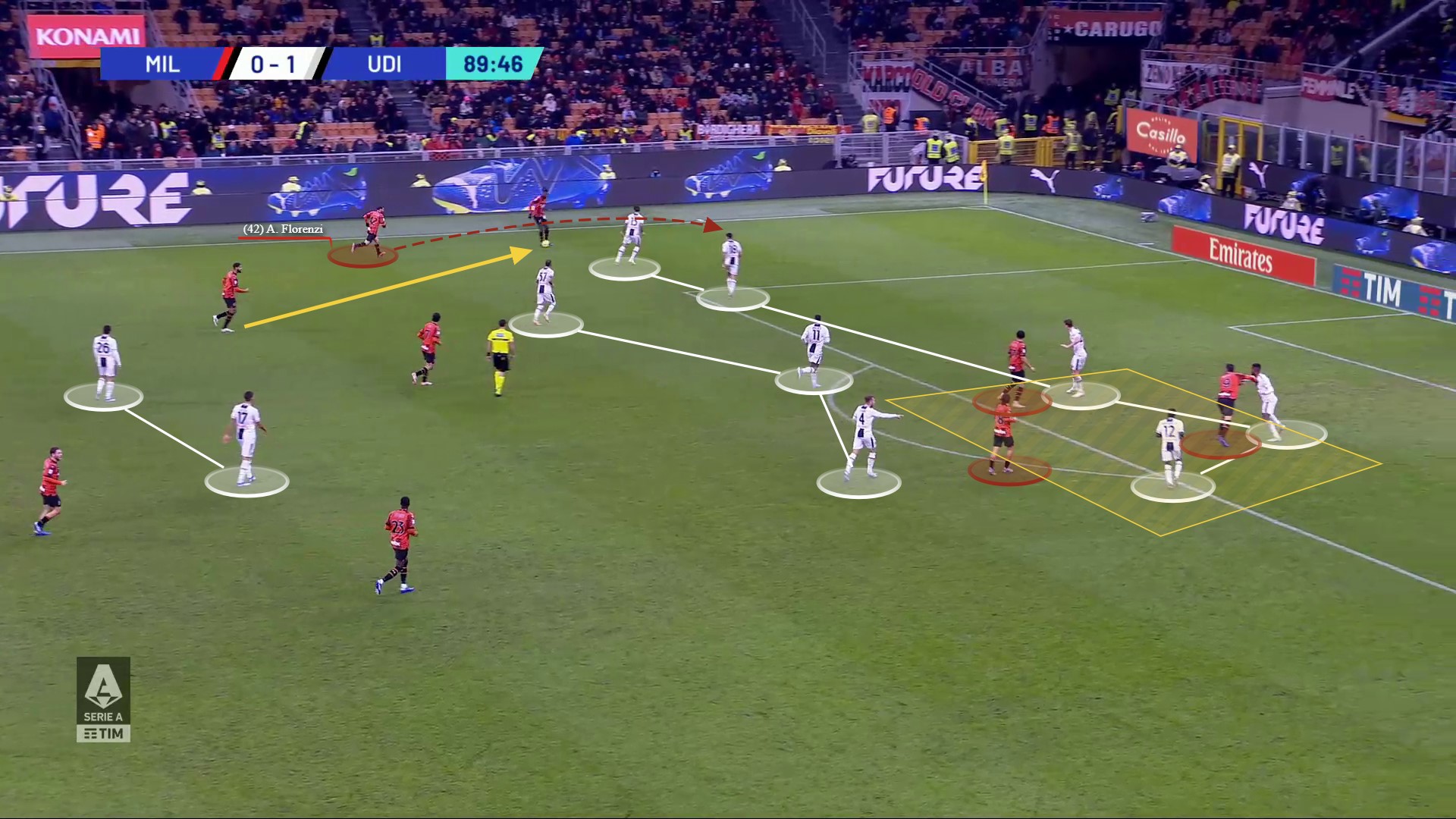
…Leão took advantage of this moment of hesitation from the Udinese players to whip in his now trademark inswinging cross. With the Udinese defenders dropping deeper and deeper to protect their goal (and lead), Giroud found himself in a 1v1 match-up on the edge of the six-yard box.
Leão’s cross was delivered to perfection but Giroud was only able to connect with the ball via his shoulder, but due to his proximity to goal it still forced Silvestri into making an acrobatic save.
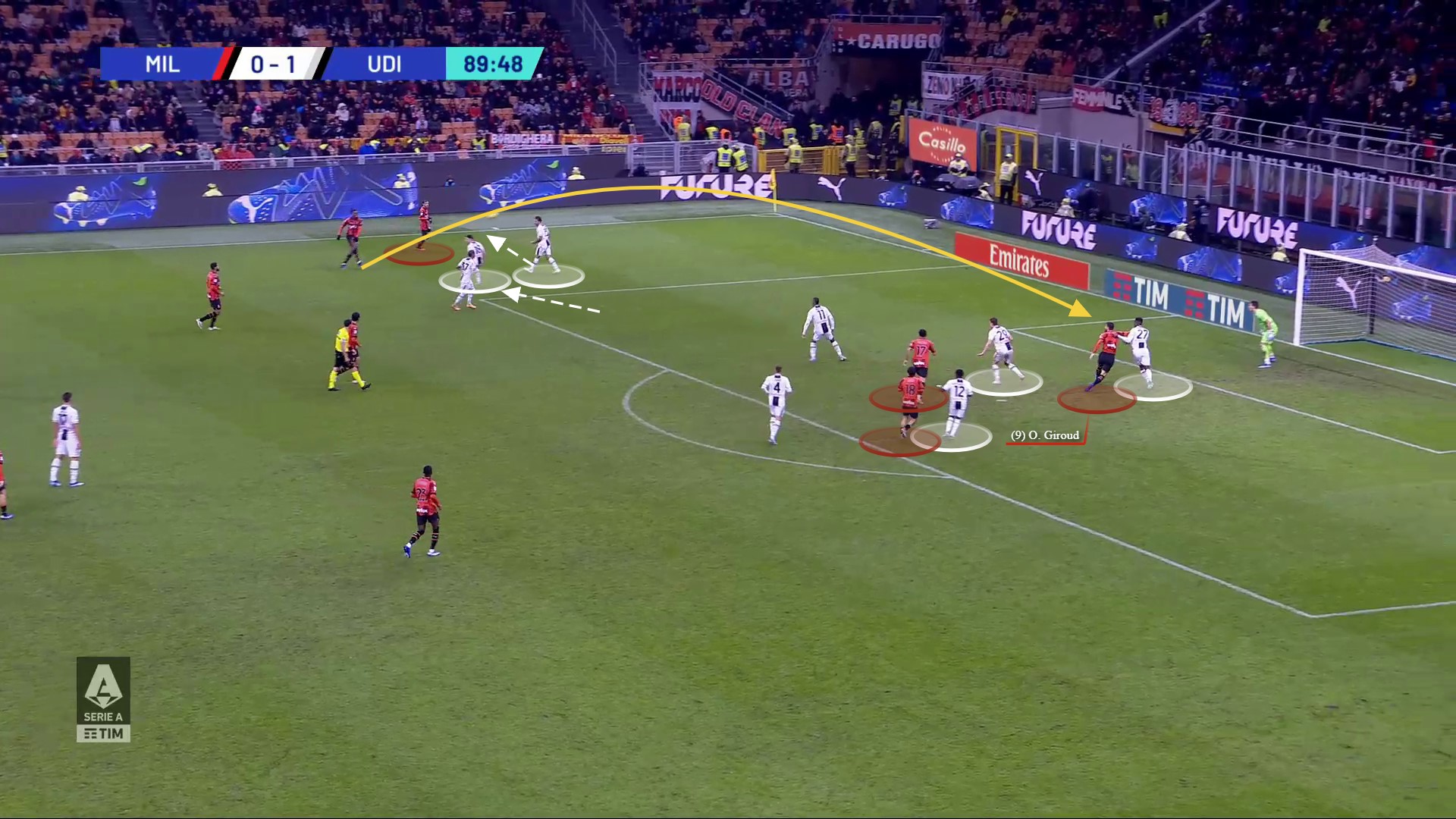
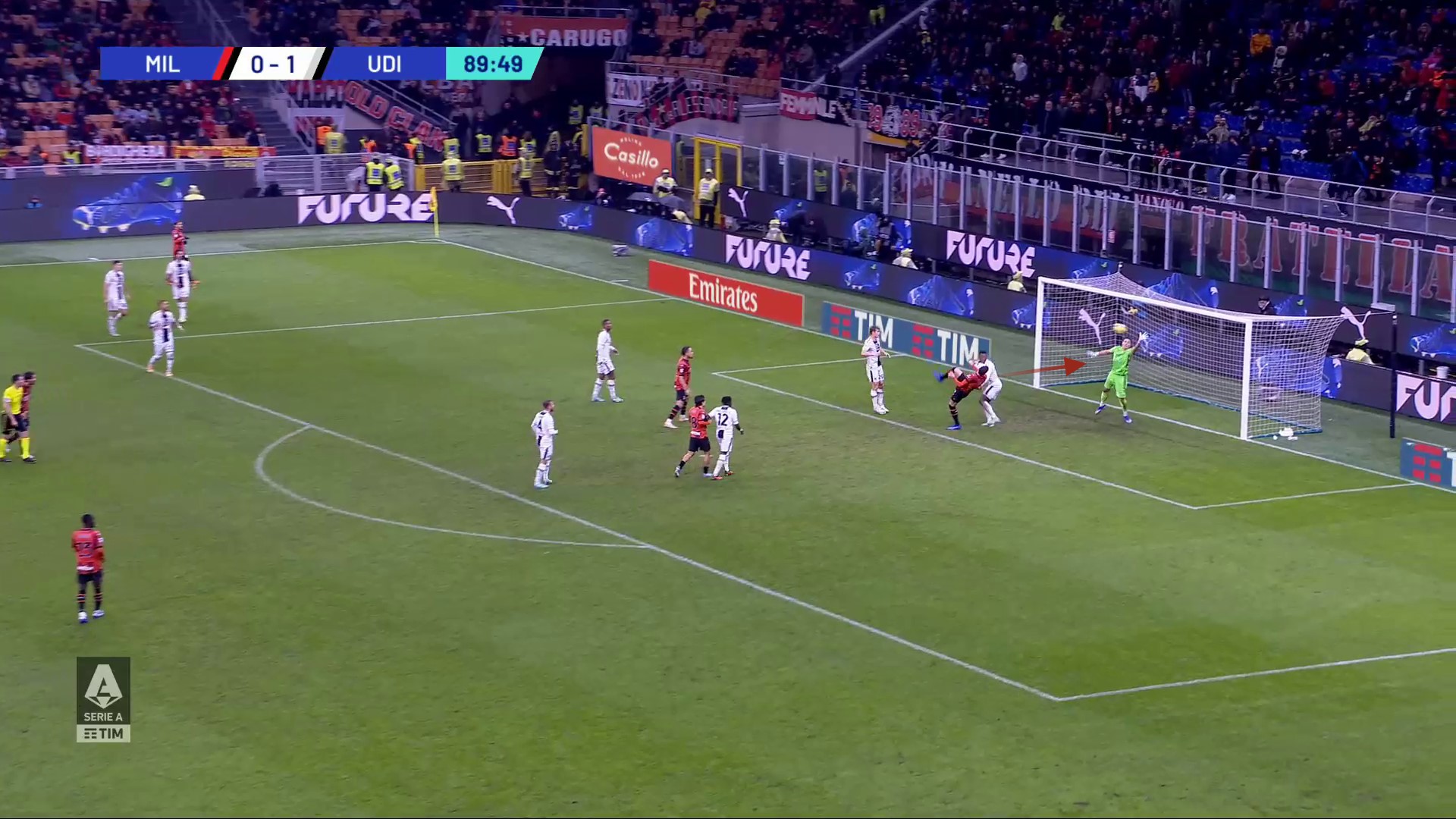
The game concluded several stoppage-time minutes but the scoreline remained the same. Milan had been unable to find an equalizer, but quite frankly their performance had not warranted one.
“Tonight we lacked something”
Speaking after the defeat, Florenzi said: “Tonight we lacked something. Clarity, we lost many balls.” Piolo echoed these views by saying: “We struggled and lost clarity as well as quality. There was too much confusion this evening.”
With a must-win game against PSG on Tuesday in the Champions League and now a must-win game away at Lecce next weekend in Serie A, Pioli needs to provide his side with some clarity, and quickly, or risk falling out of every race before they each even properly begin.
Stats referenced within the article were sourced from both Wyscout and MARKSTATS.

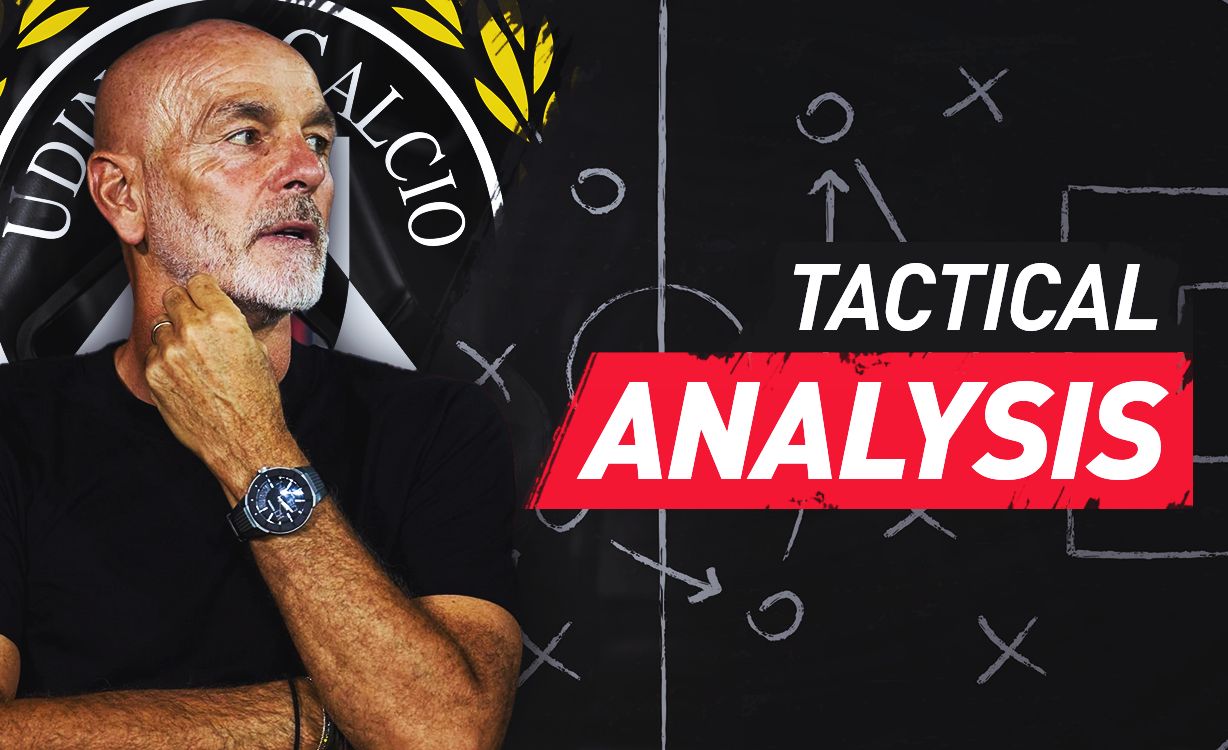
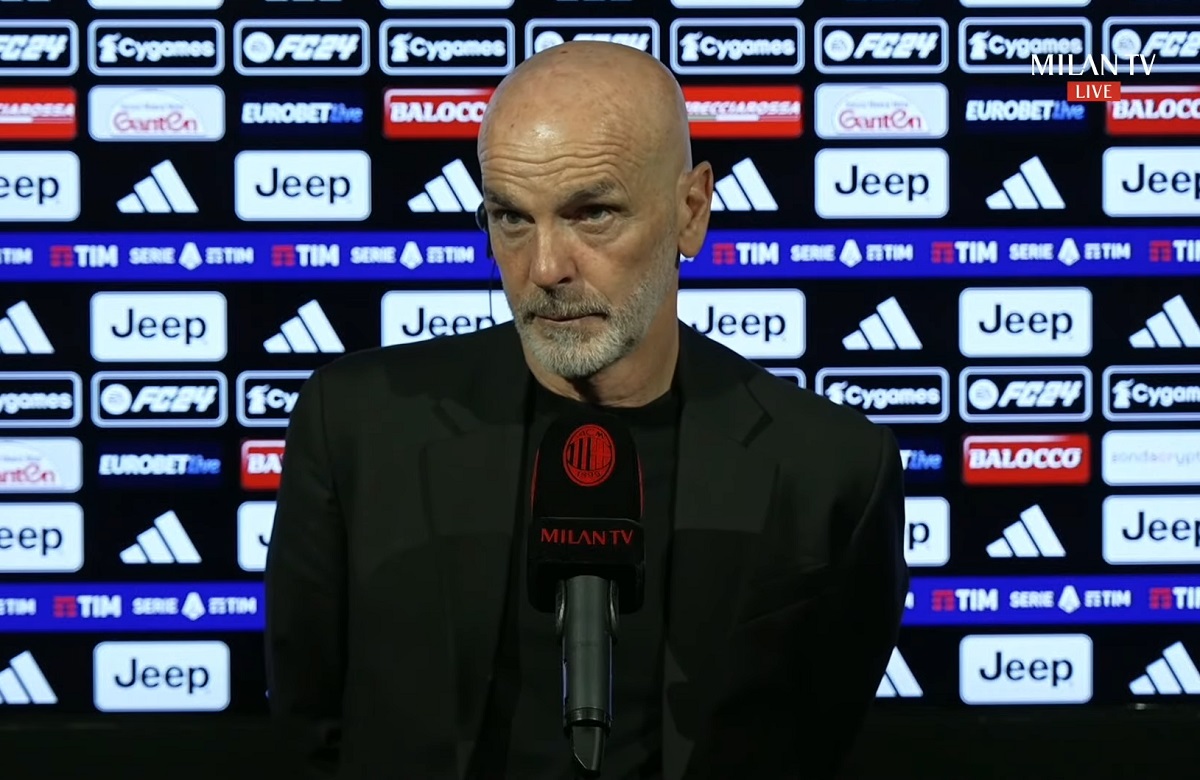
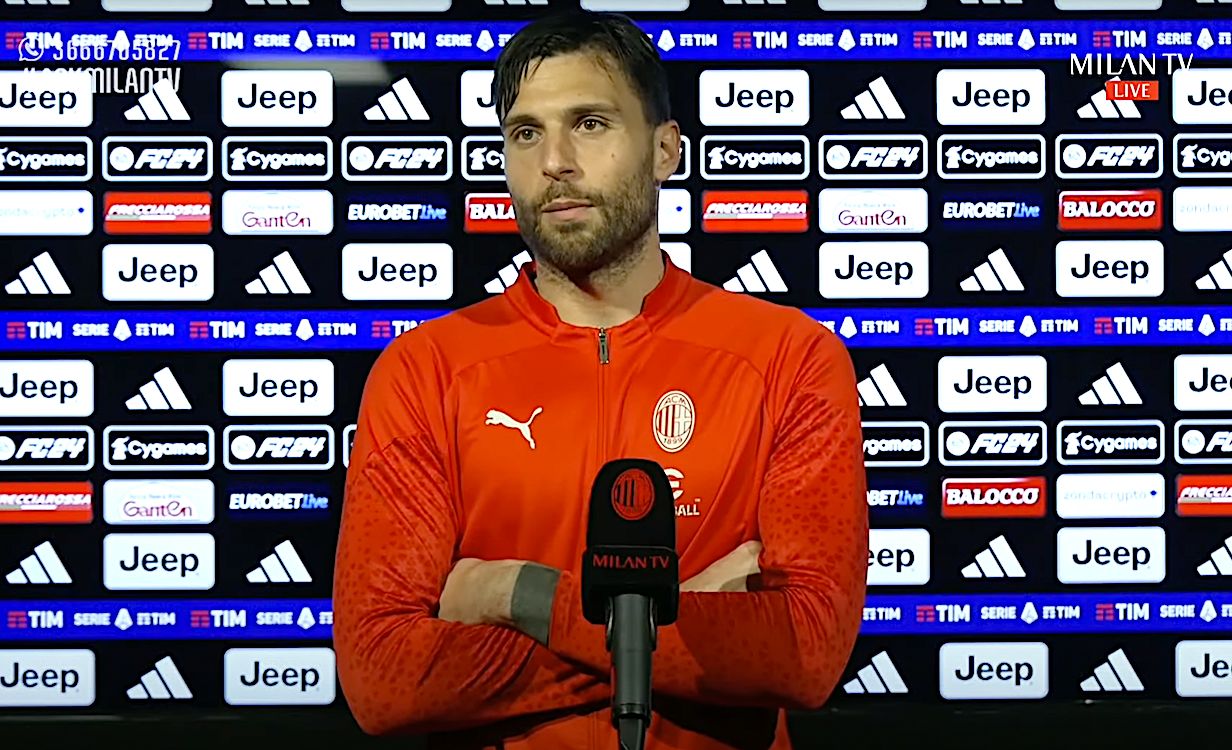
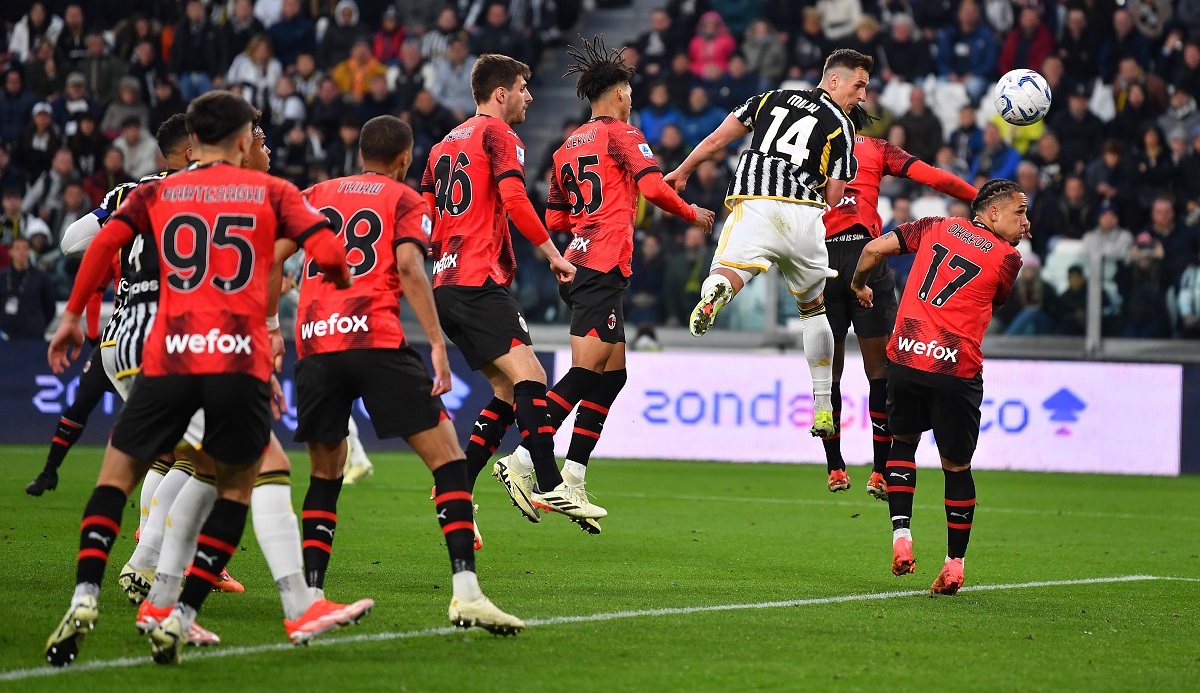
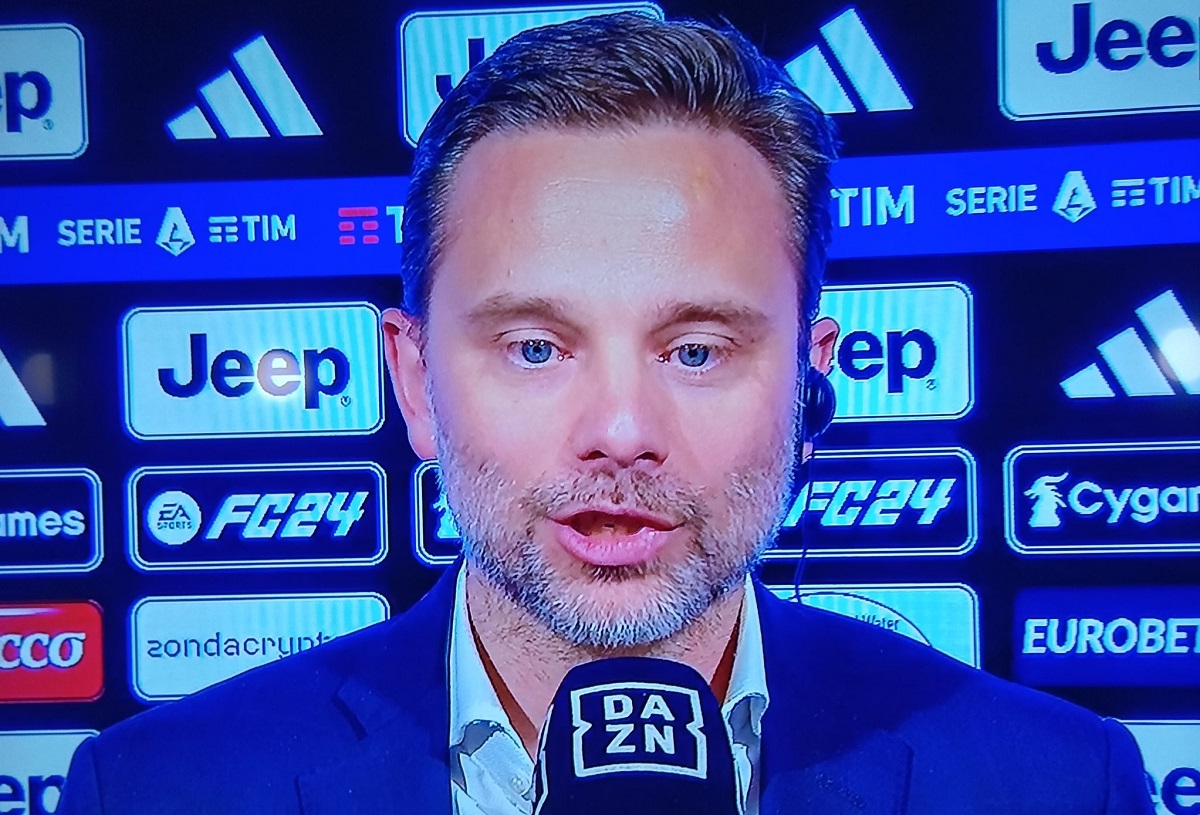
I wasn’t happy with musah, his off the ball movements were terrible.
Jovic is a dead footballer, his loan should be terminated ASAP.